#quality and opinions aside there are so many aspects of it that are relevant to current times
Text
i will never not bitch about dracula. ever. it’s the hill i am going to die on and come back to life and keep haunting it because that’s how much i hate bram stoker
#do you KNOW how frustrating it is to see everyone embracing the DUMBEST MOST IDIOTIC AND USELESS INTERPRETATION OF A BOOK#quality and opinions aside there are so many aspects of it that are relevant to current times#and exploring the orientalism and antisemitism in it could lead to some very interesting interpretations#like just off the top of my head the bribing and boat buying in romania when they go back#it’s such a clear display of power over the locals kind of like the neo-colonialism the west has over the balkans right now#and how the westerners are given free reign over a country that’s not theirs to chase a phantom so does that make THEM the vampires?#but no. let’s talk abt how much jonathan harker is a wife guy#i fucking hate that bitch so much the brides should’ve just eaten him#ANYWAYS IF YOU WANT TO FILTER THESE THE TAG IS#lina laments.txt#again. everyone say thank you mills davinciae
1 note
·
View note
Text
One of the more interesting aspects of Stayed Gone is the implication that, prior to his disappearance, Alastor must have been producing some quality programming.
Despite it's obvious importance in the modern world, TV apparently only started outcompeting radio in Hell after Alastor vanished. Seven whole years ago. And when Al returns, Vox's first response is to freak the fuck out about whether he's gonna keep his audience.
That's fucking crazy.
And we can be pretty sure that people weren't just listening in out of fear, either. Or because Alastor was making any major effort to crush all other forms of media.
If this was purely about which Overlord was the most powerful, then Vox's verses would surely have focused on emphasising his own strength. Instead, they're all about calling radio outdated. Vox is genuinely worried— apparently based on experience— that Alastor is going to outdo him in terms of sheer entertainment value.
Which raises the obvious question: what were Al's shows actually like? (Aside from those early broadcasts guest-starting the screams of the damned, obviously.)
We get kind of a taster in the song:
“Salutations! Good to be back on the air. Yes, I know it's been a while, since someone with style treated Hell to a broadcast— Sinners, rejoice!— instead of a clout-chasing mediocre video podcast. Is Vox insecure, pursuing allure? Fitting between this fad and that, is nothing working? Every day, he's got a new format! Is Vox as strong as he purports? Or is it based on his support? He'd be powerless without the other Vees! And here's the sugar on the cream: he asked me to join his team! I said no, and now he's pissy, that's the tea!”
Obviously he's doing it to music, so there's going to be some difference in the cadence of his voice from that, but still, he's talking noticeably quicker than he does in person. And he gets right to the point.
Compare it to his commercial in episode 1. There's a big difference in terms of both how much respect he's showing his audience (“well hello there, you wayward sinner!” vs “good to be back on the air”), and how much relevant information he delivers.
Alastor is a great character to watch, but most people who interact with him directly seem to find the experience either annoying, awkward, terrifying or all three.
Mainly because Al seems to go out of his way to put people off even when he's actively trying to get them to trust him, by making condescending asides or constantly dropping references to his own power. On air, however, he greets everyone politely and even drops what is almost an apology for being gone so long (“I know it's been a while”), then immediately gets to the information that he knows they're really listening for.
Alastor may not respect Charlie, Adam or Lucifer, but he does respect his audience.
And the content he's producing makes it clear why people are still tuning in. Al has the gossip. Katie Killjoy and Tom Trench may not be unbiased exactly, but they're clearly trying to provide sources for their claims and maintain some veneer of professional news reporting.
Al, meanwhile, is quite happy to provide strong opinions and baseless speculation about public figures, content that is less fitting with the professional image that Vox seems so desperate to keep up, but that is likely to attract a bigger audience.
What gets me curious now, however, is wondering what else he used to provide.
Again, radio was apparently the medium for news and entertainment in Hell until Alastor left. Implying that a) radio was at the time fulfilling many of the function that TV now provides, and b) Alastor was involved enough in this that it collapsed/got overthrown the moment he left town.
Did Alastor have an empire similar to the Vees? Did he run a bunch of channels? Did he have DJs and sports commentators and presenters on his payroll?
Given that radio seems to have collapsed completely after he left— did they all go running to Vox when he was presumed dead? Was the Vees new empire in part built on the ruins of Alastor's old one?
Or did he do the whole thing solo and just run like, a bunch of different shows. (In which case, since radio's bread and butter has always been music, Helluva Boss fans can now have fun imagining him interviewing Verosika Mayday about ‘Vacay to Bonetown’.)
#hazbin hotel#hazbin hotel meta#hazbin spoilers#alastor hazbin#vox#stayed gone#meta#hazbin hotel headcanons#i'm writing this right before bed so excuse if it seems a bit disjointed#🥱
180 notes
·
View notes
Text
Blocked to comment this on Anthony Fantano’s video (so I posted it here).
undefined
youtube
undefined
youtube
I couldn’t comment a response to this video on YouTube due to censorship so I decided to do it here:
The problem with Paul Joseph Watson is mostly the rational that is used to justify the 'breakdown' of morality through art and culture. The viewpoint that popular culture, within the twenty-first century,' is more "vulgar," "vapid," "self absorbed," "hedonistic," and "dehumanizing" "than any other time in living memory" is a view that is extremely one sided and biased. Any generation of the past could have made this argument about the popular cultural of their day and how it is "farther apart" from the traditional, fundamental values that define a culture or society.
If Watson is going to use the example of Miley Cyrus twerking in front of Robin Thicke as a reason this is no different than the view that parents, or most adults, had during the sixties about rock n' roll. For example, when the Beatles broke up my grandparents (on my fathers side) disparaged the groups period as a band commenting that 'The Mills Brothers' (a barbershop quartet that had a career run of fifty-four years and scored hits with 'You Always Hurt the One You Love,' Paper Doll,' 'Glow Worm,' and 'Up a Lazy River' in the forties and fifties that branded them "The Beatles of the 1940's") had a longer run and that the music, aside from Earl Hines, Marva Josie, and Dinah Washington etc. (musicians who need no introduction), had more 'quality' than the entirety of rock n' roll due to the immoral substance that my grandparents (on my fathers side) believed existed. Although this is not meant to disparage this generational period, as they were not always wrong on what popular culture contained whether it was moral or immoral, it highlights the gap between an older and younger group of people who, in some cases, failed to keep an open mind on what was new and presently modern.
If I was going to provide an example that related to the "classical traditionalism" that is 'mostly' found within Watson's channel, I would counteract this with examples of artists (composers, painters, sculptors, etc.), such as Frédéric Chopin, Alexander Scriabin, Arnold Schoenberg, Alban Berg, Karlheinz Stockhausen, Steve Reich, Philip Glass, Vincent Van Gogh, Mark Rothko, Jackson Pollock, Andy Warhol, Franz Kline, Barnett Newman, Francis Bacon, Damien Hirst, or Samuel Beckett. Although these names would invoke a more increased sense of realism to counteract against Watson's belief it would STILL, no matter how logical or understanding, would not be enough to disprove the argument that most, or all, of modern culture is immoral and responsible for the breakdown of "beauty" and "truth" (although these terms are subjective to how they are used within the given context to what people believe is beautiful and true).
Although there are a fair number of examples that have proved how modern society has provided the shift for the decrease of morality, this is still not comprable enough to assert the belief that modern society is the reduction of "everything that is 'moral' or 'positive' " (given the context of a certain subject or topic). If Watson had existed in the different eras of the artists listed above, he would have most likely disparaged what was not explicitly beautiful (hence, if he had existed in the era of Chopin, or Scriabin, he would have denigrated the use of dissonance found within a fair amount of their oeuvre as composers) believing that although these more modern artists are not entirely negative they STILL take away from the reality of "what beauty is."
Although I am four years late (regrettably), and I do not happen to agree with everything Fantano is expressing, he includes some important and relevant points, saying that although the classic, artistic styles of portraits are still relevant, it is essential to have variety and new ideas so these artistic, subject areas do not become static (3:00 - 3:08). With new ideas this allows for newer perspectives on how these traditional concepts can be considered, or 'digested,' from a newer perspective. Fantano also reminds us of the point that not everything in the modern era, especially television, is awash of programs that are unproductive, crude or narcissistic. For anything that can be defined, or misconstrued, as negative, or unproductive, it can be followed up with television programs, art, music, literature, or online articles that are supported with the intent of positively informing or entertaining their readers, listeners, or audience members.
Due to this, it disproves the view that modernism has produced the "diminishment of beauty" to such a high degree that it is a rare, almost nonexistent characteristic within our society. Although I believe that beauty has been subject to various levels of diminishment throughout the different eras of modern history, it STILL is an aspect of life that many people are fighting, protecting, and exemplifying through their work with some examples that include modern artists who are still living or working within the twenty-first century (with videos to prove my point):
Anthony Braxton (American "free jazz" saxophonist, composer, bandleader, and improvisor)
undefined
youtube
Barry Harris (jazz pianist, composer, bandleader, and teacher)
undefined
youtube
(although he is more of traditional modernist, espousing those who came after bebop such as Bill Evans)
undefined
youtube
Cormac McCarthy (author, novelist, poet, and playwright)
https://www.youtube.com/watch?v=_s-egB5SzFY
David Dubal (classical pianist, writer, and disc jockey)
undefined
youtube
David Hockney (painter)
Frederick Buechner (writer, novelist, poet, autobiographer, essayist, preacher, and theologian) (this will only maintain relevance if you are religious)
undefined
youtube
George Winston (pianist, organist, guitarist, composer, and improvisor)
undefined
youtube
Keith Jarrett (jazz and classical pianist, composer, bandleader, improvisor, and multi-instrumentalist)
undefined
youtube
(with five other video examples as well that will be posted in the reblog of this response)
Even if these examples provide a strong, moderate, or weak validation for my argument they prove my point (I hope) that beauty is STILL a valued characteristic of daily life and defined as essential for the overall growth, of not only those who are subject to the work, but of the society and environment in which they live. Although the examples above are mostly based around music (due to this being a music channel), I have tried to include other aspects of the arts as well to prove that the modern world, whether it is centered around the second half of the twentieth century or the majority of the twenty first century, is capable of deriving beauty from non-traditionalism and that traditionalism is the foundation that supports the ideas that are acted upon in a modern context. Understanding this, it is safe to assume that not everything has to be 'traditional' or 'conservative' to be considered legitimate. Instead, it is more proficient to believe that as long as the various mediums within the arts, or other aspects of our societal culture, exude a pronounced sense of positivity, this will create a more likely heightened sense of awareness for what is considered 'valuable,' or 'essential' for a given society.
In summary, if Miley Cyrus and Marilyn Manson have profited off an existence that is viewed by a majority as being immoral this does not define the entirety of the modern world. Overt sexualization, the diminishment of beauty, and the "pretentious works of art" found at TATE Modern (using Marcel Duchamp's readymade sculpture, 'Fountain' (1917) as an example) is not the "top defining example" of modernism. Instead, they represent examples of variance that Fantano views as "shit posting before shit posting," even though I disagree with this viewing it as the development of a new artistic style and philosophy (what was known during Duchamp's life as 'DADA'). These newer styles separate art from aspects that are "static," "boring," or "plain" (depending on how these works are viewed) with Fantano using Lou Reed's 'Metal Music' as a relevant example for musical, modern ideas.
The "take down" (depending on how you define this in the context of how it is used) of traditional, conservative values do not define the majority of what is observed throughout the lens of modernism. Instead, it is artists, writers, composers, etc. taking risks on how they can combine traditional aspect of their medium, or style, and subject them to new ideas that are experimental, or improvisational, in their nature. even if an artist’s ideas had no connection to any aspect of traditionalism would this make it bad? In my opinion, not really.
Even if Watson makes a fair number of points that, hypothetically, could be agreed upon (with most that I do not agree with) this does not account for how flawed this view is. It is not healthy, or viable, for someone to look at the modern world with blinders on and continue to move forward. This does not assert change. This does not introduce newer ideas. This does not move traditional aspect of art, or culture, past their classical, conservative stages of infancy. If you want to move forward in the truest sense of a philosophy (give or take what that may consist of) you have to be open to incorporating newer ideas, even if it exists outside of your own personal worldview. You do not have to agree with it but to close yourself off entirely from a new experience that could benefit you personally is wrong.
The logic of "I disagree with certain characteristics of this so I am going to reject it entirely" is WRONG and should NOT be exemplified by anyone at any time. If you happen to disagree entirely with something that is your prerogative and should be respected (as long as it logically based off of facts that can be proven and sourced). Regardless of how right or wrong Watson is (although it may be apparent which view people have taken), it does not set aside the hatred that is transparent when choosing to believe in this philosophy. There are certain facts that define life and although it may be obvious that general "players" within the current culture are immoral and act in contrary ways, (opposed to the moral and values that once, in greater ways, defined our culture), this does not mean that those aspects of modernism that you personally disagree with, aside from what can be factually proven, are wrong, nor are they "the problem" (as Watson would say).
Yes, society has become more contradictory.
Yes, society has become more immoral.
Yes, society has become less centered around a factual or moral truth.
That is just the reality. But is it appropriate to hate what does not measure up with "moral" examples of the past? No.
Of course Mark Rothko is going to be different from Michael Angelo or Jackson Pollock from Claude Monet. That is just the way it is.
But to throw away what you cannot see personal value with may be realistic, and understandable, but in the end is ignorant.
So overall, anything that can be viewed as negative in the modern era can ALWAYS be paired alongside that which is positive. This has been true for the sixteenth, seventeenth, eighteenth, nineteenth, and twentieth centuries, while still remaining currently true.
If Watson has to be given examples of positive aspects of modernism within the arts and culture, I suggest that he do more research. But then again, he is probably incapable of finding real, hard data, or credible sources, when he only exists on a surface level (and I know this from personal experience, I used to be a subscriber)
P.S.
And NO, I would not say that this is a realistic portrayal of conservatism because what exists on the surface is usually not a summary for the entirety of people who exist within a political or social group/philosophy. Regardless, Fantano makes a great logical point while still remaining relevant while providing examples are spot on in making his point. Overall, this is a good video that deflates most of what Watson is saying as flawed and illogical while disproving him in a factual way.
Rating: B+
NOTE:
I may edit this comment so expect changes. If I do not than it is here to stay. I hope that you have enjoyed what I have written and find it to be a good contribution to Fantano's response.
#essay#commentary#youtube#paul joseph watson#anthony fantano#video#writing#modernism#culture#society#politics#barry harris#jazz#modern jazz#anthony braxton#composer#composing#nea jazz#improvisor#pianist#piano#keith jarrett#david dubal#classical music#george winston#instrumental music#theneedledrop
5 notes
·
View notes
Text
A Tapestry of Lace and Silk : the visual aesthetic and costume design of Crimson Peak (2015)
In the dark corners of an ancient mansion, you hear the rustle of a long dress on the floor, there behind a closed door, lies some ghosts and secrets that should never be unearthed.
A woman walks in the silence.
Crimson Peak (2015) is a movie directed by Guillermo Del Toro, and is one of the most obvious mainstream examples of the gothic romance in cinema in the recent years. With a story full of ghosts, a secret, a haunted house and of visuals directly inspired by the mid-century gothic romance book covers. This movie is visually highly stylized and immersive in a way I think a lot of filmmakers and studios tend to shy away from.

While Guillermo Del Toro’s movies tend to always be very stylized and visually cohesive, Crimson Peak is truly the one, in my opinion, where the production design was at its most compelling and beautiful. To me, it’s obvious how much care and attention has been given to even the slightest of details, to create the perfect visual identity for this film. I have read once that the gothic was very decorative, as a genre. From the dark mansions, and the flowing nightgowns to the flickering lights of the candles and the creaking floors. The ~aesthetic~ is something that is very important to a gothic romance story. It’s all in the atmosphere, as well as some important elements of the story in itself, that make a gothic romance. Gothic Romance is a genre that you have to lean into, and Guillermo Del Toro perfectly understood it when it came to Crimson Peak.
Before we go more into it, i just want to warn you all that there’s probably going to be spoilers in this article. I will try my best to avoid being overly blatant about what happens in the story in itself, because that is not my focus. My focus during this article will be on the production design of the movie, the way this movie looks and has been designed, especially when it comes to the costumes and the outfits the characters wear throughout the movie. I mostly want to go deep into the visual aesthetic of this film, from the decors and visual themes to the dresses and outfits that were created for this story. I want to talk about the visual aspect of the movie and how it translates within the genre of gothic and the medium of filmmaking.
Guillermo Del Toro : the cineast
Guilerrmo del Toro is a mexican director mostly known for having a very distinct style of dark fantastical movies often featuring monsters, myths, the folklore and fairytales. His movies alternate between being made in spanish or english. His stories and movies often explore the dark side of the fantastical, of fairy tales and stories told after the dark. and yet. they have a hopeful side to them .
While a lot of his movies were successful, I do think it’s El Laberinto del fauno (2006) (Pan’s Labyrinth) that really established him as a thriving filmmaker, despite how niche a lot of his movies and stories are. Which, by the way, as a quick aside, Pan’s Labyrinth is a very formative movie to me, I watched the year it came out, when I was 11 years old, my dad brought the DVD home, thinking it was a movie for children. And well. It was not. I ended up being TERRIFIED and yet mesmerized and this was my first contact with Guillermo Del Toro as a filmmaker but it certainly wouldn’t be the last. His movies are crystallized in my memory, and they awakened in me a love of this more gothic and fairy-tale inspired horror. He's definitely a movie director that brings his unique touch to whichever work he’s doing.
The Gothic is a very prominent part of Del Toro’s work, which he calls Gothick (and is indeed a word that represents the genre that got started by Horace Walpole’s book The Castle of Otranto in 1764) and he describes the relationship he has with this genre as “a way to discover beauty in the monstrous” The protagonists of Del Toro movies often embrace the darkness that exists around them and within themselves. For Del Toro, the gothic is the “only genre that teaches [us] to understand otherness.” You can see it in the narrative of so many of his movies, which culminates in The Shape of The Water, where the monster ends up being the victim of society, and the real monster is the character of Michael Shannon, who represents the pressure of society, the norms and accepted and what can happen if you deviate from what is accepted.
The narratives of Del Toro’s movies reject authorianism in any shape or form, whether the societal authorianism or the narrative ones, and this makes for a way of storytelling that often turns around all expected tropes.His movies are, at their core, anti-fascist and, in my very humble opinion, very relevant during our current political climate on an global level. I really do not feel like I am the right person to dive deep into this subject in a small article on the visual aesthetic of one of Del Toro’s movies, but I want to recommend the thesis The Dark Fantastic of Guillermo Del Toro : Myth, Fascism, and theopolitical Imagination in Cronos, The Devil’s Backbone, and Pan’s Labyrinth by Morgaan Sinclair. That thesis is widely informative and interesting to read and will probably dive deeper in those themes that are always somewhat present in every Del Toro movie.
He loves using “typical” genre stories and making them his own. From folk tales, fairy tales, vampire stories, legends, he uses these narrative motifs as a template for his stories, but he always subverts them in one way or another, exploring the darkness within. And this is what he also did with Crimson Peak, but now with the gothic romance genre as his template. Gothic Romance is one of those genres that is very formulaic in some ways, it has very common tropes and themes that are often used. For example, the way he explores the gothic house and its entire symbolism in his early movie The Devil’s Backbone (2001).
[These old-Gothic notions insinuate themselves in the Gothick terrain of del Toro’s films. The Devil’s Backbone, a ghost story set in a remote orphanage during the Spanish Civil War, seems at first glance to be a classic Gothick romance, which, as del Toro reminds us in his commentary, focuses on the house, the domicile, as an emblem and warped container of the human self. This symbolically charged structure, he says, always conceals a “dark secret,” linked to a treasure and deep passions, “that is buried in the past and affects the people living in it.” At the center of the darkness stands “a very pure hero—a new set of eyes to explore the secret and through the purity of his heart unravel the mystery.”]
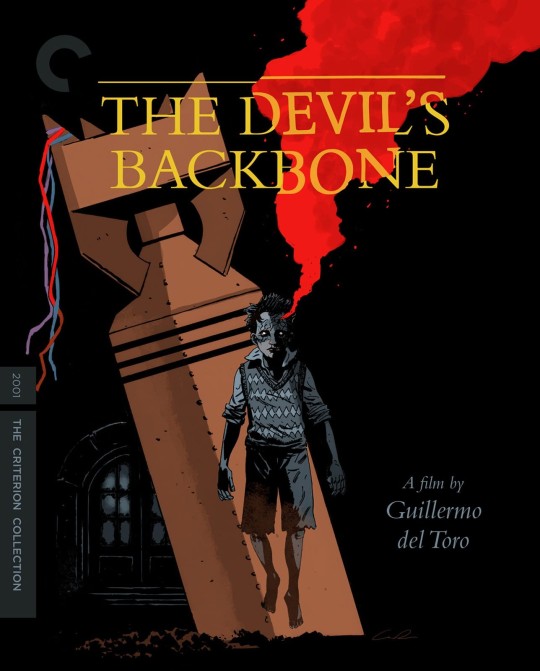
When it comes to his films, Del Toro tends to often use archetypes as a way to effectively communicate certain concepts, but more often than not, he will turn these archetypes upside down. Del Toro tends to also use a lot of symbols in his movies, weaving a tapestry of overarching themes and meaning. He gives depth to his stories by a use of various artistic and literary references, historical references. building a story that contains layers upon layers. This depth also translates to the visual aspect of his movies, as Del Toro movies tend to be carefully and precisely crafted. The aesthetic is, as one might say, on point. From the somber and fantastical creativity of Pan’s Labyrinth to the epic and vibrants colors of Pacific Rim. Crimson Peak is, to me, one of the most visually beautiful and compelling movies of Del Toro, and this is what we’re going to get into a bit later.
A ghost story:
This story starts at the end. This is a narrative device Del Toro also used with Pan’s Labyrinth, the movie starts with the final scene, and we know that something terrible is going to happen, and it just keeps the tension and stakes high during the entirety of the movie, as we keep wondering when things will take a turn for the worse.
We can see Edith Cushing (Mia Wasikowska ) wearing her white nightgown, in a scene of fog and piercing white. Her blond hair is flowing down on her shoulders, her face is pale, and her hands.
Her hands are drenched in blood.
The first sentence of the movie is then spoken : “Ghosts are real. This much I know.” This immediately sets the tone for the rest of the movie.

And then. It goes back to the beginning, when she was just a young child, at the moment her mother died, when the ghost of her mother, veiled in black lace, came to warn her, to beware of Crimson Peak…
Edith Cushing is a young woman living with her father and who dreams of becoming a writer. She keeps trying to publish her story, not a ghost story, but moreso a story with a ghost in it. “The ghost is a metaphor” she says. A metaphor for the past and for regrets and violence that still permeates a place. She then meets Thomas Sharpe (Tom Hiddleston), an english baronet without fortune, and his sister Lucille (Jessica Chastain). After the sudden (and suspicious) death of her father, she marries Thomas and follows him and his sister back to England, in their strange mansion that stands isolated in the midst of english hills, atop a source of red clay. The Sharpes are an aristocratic family with no fortune and a decrepit mansion where strange things happen, where ghosts roam.
There’s also a social commentary here on the changing social norms and social classes. While the Sharpes are an aristocratic family, owning land and a title, they are not rich. Their clothes are good quality, made from good materials and hand crafted, but they are also old and not of the current fashion. They are in a very strange place socially, being higher up on the social class and yet, being broke and trying to figure out how to get money to take care of their crumbling estate.
Ghosts are real, we need to remember, and are a reminder of what has been forgotten and what has died. The past is still lingering on in the present, and violence of the past will not go unpunished. The ghosts of Crimson Peak are terrifying. I do not want to say much about them, because it would reveal too much about the plot and the story, but I want to talk about them in terms of visual design. The ghosts of Crimson Peak are terrifying, they are skeleton-like, and red. Vibrant red. They are nothing like I have ever seen before in terms of ghosts, and this is yet another way Crimson Peak sets itself apart from other movies.
Lucille says something at the end of the movie, and I will not say anything about the plot, so fear not for spoilers, she says “but the horror… the horror was for love” and I do think it says so much about the movie and about the genre. Gothic romance is not really a love story, but it’s not strictly a horror story either. It’s a blend of love and horror. And sometimes… the horror, the horror will be for the sake of love.

The building of a haunted house
Production design, when it comes to movies, relates to everything that has to do with the visual identity of the movie. The look and the stylistic choices that are made to make the movie look the way it does. From the costumes, to the sets, to the decor, and all the small details, production design is one of the most important parts of constructing a movie. It’s those elements that make out how the movie will look and what it will communicate to its audience.
The production designer works on all the aspects that pertains to the visuals of the movies, along with the director of photography. They manage everything from the costume, the sets and the decor. And they work closely with the director to craft the visual identity of the movie. Guillermo Del Toro always draws from a very vast range of thematic and visual inspirations when it comes to his movies : from gothic architecture, symbolist art, the surrealists, but also more popular inspirations such as comic books and even video games. So many of these elements are brought and matched to visually create a layered look to the film.
The visual storytelling, the ambiance, the atmosphere, all of these elements are a huge part of what makes Crimson Peak truly interesting. The visuals of the movies were not an afterthought to the script, but were an integral part of how the movie was constructed. Under the directives of Guilermo Del Toro, Thomas E. Sanders [Dracula (1992) ; Braveheart (1995)] constructed an intricate and vibrant appearance for Crimson Peak, which I think is one of the most memorable components of the film.
This movie takes the canons of gothic horror and gothic romance and embraces them, whether it is narratively speaking or visually speaking. I always love a story that leans heavily into its genre and its tropes and convention, only to make use of them in a different and new way. I can mention The Man From U.N.C.L.E. (2015) as another movie who embraces its genre, here the corny 1960s inspired spy movie, and just GOES WITH IT. I do so much appreciate when any type of storyteller and artist fully work within the genre and then try to expand the boundaries of that specific genre, all the while trying to create a work that is definitely recognizable as a certain genre.
As I said, the visuals are obviously very much inspired by the canons of gothic romance, whether it's the illustrations that were in the book of the 19th century, as well as all the historical inspirations from the late 19th century in which the movie is set. There’s also the obvious references to the book covers of the gothic paperbacks of the mid 20th century, with their jewel tones, and their heroines escaping a dark and looming manor behind them. Or sometimes, she is exploring the dark winding corridors, with only the help of a few candles lighting her way.

There’s this dichotomy that sometimes occurs when it comes to movies, of style over substance or vice versa. Which to me is a moot and useless point, because style is a form of storytelling as well. The way you construct the visuals of the movies, the decors and the costumes, and the way the film is shot, all of this is a way of telling a story and is as essential to a good movie. Even a movie that doesn’t put the emphasis on “style” also makes a visual choice. Not focusing on the visual elements such as the costumes, or the decor, is also a stylistic choice in itself. Even if the choice is to make the movie devoid of any outlandish visual assets. Taking these decisions are what ultimately make the movie be the way it is visually. A film is a visual form of storytelling,
When it comes to the sets, the movie is set mostly in two diametrically opposed houses, the airy and light house of the Cushings in Buffalo, homey and comfortable, and the cold gothic estate of the Sharpes : Allerdale Hall. Where the house in Bufallo was full of light and a warm color palette, Allerdale Hall is the opposite. That house is the typical gothic mansion, and one of the most important elements of any good gothic romance. Imposing, dark, with twisting corridors and actually decaying above them. Visually, it’s also distinctive with the colder colors that are used when filming there. It’s the ideal setting for the gothic romance story to happen. Sanders says that the only reference that he was given by Del Toro for the design of this house was the painting House by the Railroad (1925) by Edward Hopper. This painting was the beginning of a very long and arduous process as Sanders tried to create this perfect haunted house.

The house of the Sharpes, is atop a source of red clay, hence its name. It’s decrepit, falling apart, cold. “colder inside than out” says Edith when she first enters it. The house is slowly but surely sinking in the red clay that once used to be the source of the Sharpes’ fortune. Visually, it looks as if the house was bleeding, as if the house was alive. As Sanders says during an interview with Slate :
“We felt that the clay is the blood of the earth, and it’s also the blood of the house, and that the house was a living thing that embodied the family over all those years.”
Within the genre of gothic horror and gothic romance, the house plays a very peculiar part. Whether it is haunted or not, the house is very much often an important character of the gothic story, on the same level as the heroine or the antagonist or the ghost. The spaces of Allerdale Hale are tight and menacing, the house is full of dangerous sharp angles. This is not a warm house. Del Toro said that he repeated the wooden pattern on the columns three or four times, so that it looks slightly out of focus, like something is wrong, but you cannot pinpoint what it is, exactly.
Allerdale Hall is thus the perfect setting for this gothic romance to unfold, through the sharp and twisting corridors, with the gaping hole in the ceiling through which the snow falls and covers the red crimson blood of the house.

A nightgown to explore strange corridors at night:
The main costume designer for this film was Costume Designer Kate Hawley, assisted by Cori Burchell. Even though they hadn’t worked specifically on period movies and historical movies or more fantastical movies prior to their job on Crimson Peak, I cannot help but think that they did a marvelous job when it came to the costume design for this particular movie. Hawley had previously worked on Pacific Rim with Del Toro, so she was familiar with the way he worked and envisioned things. Together, they truly created a wardrobe that was absolutely wonderful for the movie of Crimson Peak. Highly stylized. Imbued with the fashion and artistic trends of the era, without being exactly Literal to the clothing of the time. She used costume design as a vehicle to communicate ideas and moods that were intrinsical to the characters of the story.
Hawley worked closely with Del Toro to create the costumes that would be perfect to convey the personality of the characters and would help build the depth of the movie. In her interview with digital magazine JEZEBEL, she says that she definitely considers Crimson Peak to feel like an opera, a piece of music in which there’s two distinct acts, and so the costuming had to also follow those two distinct acts and those two distinct worlds that the characters inhabit. From the color scheme and mood, to the details of the historical period. But most importantly, especially for a Guillermo Del Toro movie, it was vital for Hawley to look at it thematically first. Del Toro movies are always chock full of references to art, folklore and literature, and there is no surprise that the costume design should follow the same direction.
The costumes are an important narrative device as well, the clothing a character wears reflects their personality as well as their narrative journey. It can inform on the status of the character, their place in society, it’s an effective tool of storytelling. A good costume designer will use the wardrobe of each character to say something about the character in themselves but also create a cohesive visual look for the ensemble. From the colors to the chosen fashion style and to the accessories, fashion is a silent mode of communication that we all inherently understand, even if not on a conscious level. The wardrobe of each different character is thought and designed, to fit the character but the movie as a whole.
As our queen and icon, legendary costume designer and winner of eight separate academy awards for costume design, Edith Head says : “Fashion is not the primary thing, the primary effort in motion pictures is to tell a story”. And clothing do tell a story, whether or not you think they do. This is comes back to what I was saying earlier, that sometimes, people tend to not put any sort of importance on the clothing, considering it shallow and superficial, but I would argue that it’s a very subtle way of storytelling that says more about the character in a single outfit than a whole scene of exposition ever could.
Edith’s clothes are all very modern and current to the era the movie is set in (ie. 1901) The silhouette of all the clothes she wears are very much within the fashionable silhouette of the era, with the gigantic sleeves, and the cinched waist and slightly flare-y skirt. All of the dresses she wears throughout the movie have the leg-of-mutton sleeves that were so fashionable during the late 1890s and early 1900s. The color palette of Edith’s clothes is very much within a very soft and warm-toned palette, with a lot of soft yellows, ivories, creams, mustards and golds. this very much visually set her apart from the Sharpes. Hawley says she imagined Edith as a canary in a coal mine, her vibrant yellows and gold outfits in the dark and somber walls of Allerdale Hall. Hawley and Del Toro also used a pre-raphaelite portrait of Helen of Troy by Dante Gabriel Rossetti (1863) as a visual basis to work on Edith’s aesthetic.

She’s a down to earth woman who is ready to make efforts and her dresses reflect this aspect of her personality, they are comfortable and practical, while still having that air of whimsy to them. From the gigantic buttons on her honey colored dress or the beautifully eccentric belt in the shape of hands. Kate Hawley, the movie’s costume designer, says that this belt is just an upscaled version of the small mourning jewelry in which a lock of hair of a loved one who passed away can be found in. “I took these little earrings, these little ivory hands, and we scaled them up so it was almost like a mother's hands clasped around her waist”. (I so desperately want a belt like that btw, it is creepy but i still want it, if any of you happen to find one, please do contact me, thank you so very much.) She matches her hat and gloves with her ensemble, and generally, Edith, is just very visually cohesive and coherent within her own style.
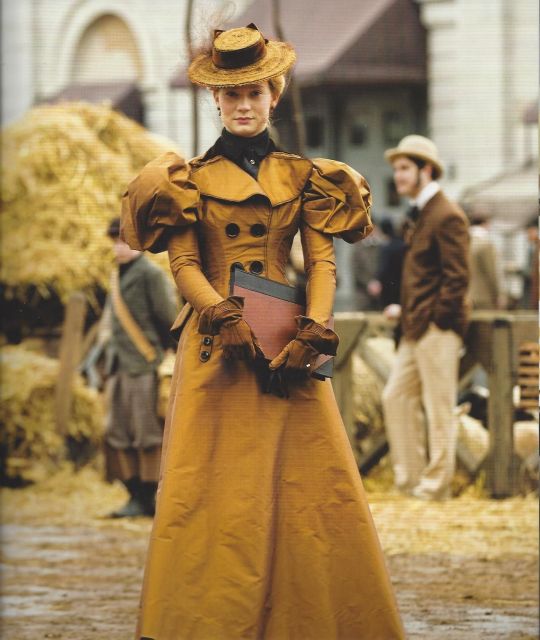
During a very romantically and sensually charged scene, she wears a beautiful evening gown in ivory satin and ornamented with pearls. She enters the room dressed in this lovely dress and a long satin cape of the same color and a pleated collar, her hair delicately swept up. This is Edith’s very own dramatic moment, where she gets to dance with her romantic lead and wears an outfit that is a bit fancier than her usual fare. This dress is still within the very soft and pale color palette that represents Edith. This particular dress is visibly inspired by a painting of the italian artist Giovanni Boldini : The Black Sash (1905), which furthers the fact that this movie’s visual aesthetic is deeper than what first meets the eye. From the delicate color and stark black ribbon down her back.
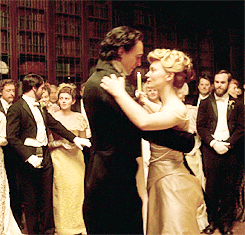
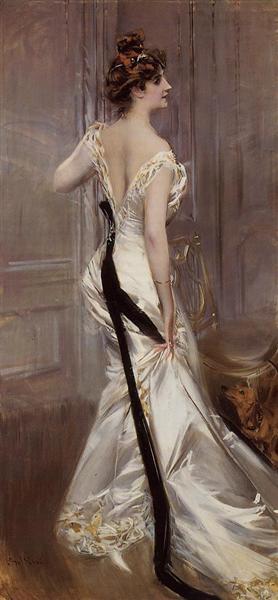
Edith, though, is our ingenue heroine of the gothic romance. One of the main archetypes in the gothic romance is the innocent heroine, a young woman thrown into a situation that’s claustrophobic, scary and dangerous. In every gothic romance, there comes a moment where the heroine leaves her bed in her nightgown, it’s a very striking visual that is the mark of the way we visualize gothic romance. She holds a candle, wearing only the lightest of clothing, and goes to explore the darkness within the walls she inhabits. Her nightgown ends up being the most significant outfit of the whole movie, it truly marks her as a gothic romance heroine, while she roams the corridors at night.
«I’ve never done so many nighties and nightgowns! It’s all about running around in night dresses through long corridors. That also blended to the fabric. When Guillermo said to me, “It’s about a house that breathes,” that’s why we chose the lightest fabric, just a little thing to try and help the storytelling with the idea of the house.»
Edith’s nightgown is striking, the movement of the heavily pleated garment fills the whole screen whenever she moves, it gives her a certain elegance and follows the cohesive silhouette and color palette that was established for her thus far, with its gigantic sleeves and the soft warm and earthy colors of the dressing gown she wears over her nightgown, as she goes down the dark stairs of Allerdale Hall.
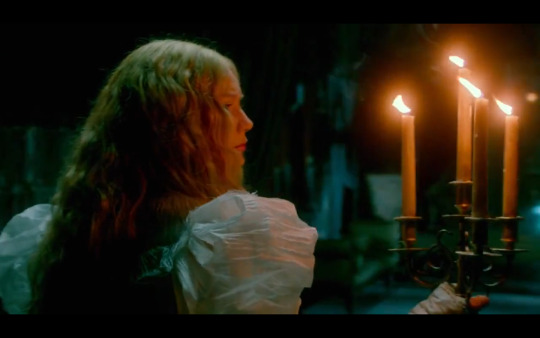
Where Edith is the innocent ingenue, Lucille is the woman hardened by life and misfortunes. She is all sharp angles and contrasts, where Edith is soft and kind, with a seamless color palette. Lucille’s outfits are stuck twenty years in the past and this is very much a narrative device and tool that’s used through the usage of dress and costume design. By showing her in these lavish but old-fashioned dresses. it serves both the purpose of showing how rich and noble the family of the Sharpes is but also, it effectively communicates how they do not have the means to actually follow the current fashionable trends. It shows that Lucille is not one to want to have something of lower quality or cheaper than she thinks her standing deserves. Lucille is a woman that is stuck in the past and is not truly living in the current times. I think that even though these details often necessitate a basic knowledge of the dress silhouettes of the late 19th century and early 20th century, this tactic still visually works because it sets Lucille apart from the rest of the world. It expresses visually how she and her brother are distanced from the world outside.

Her dresses and outfits are dramatic and striking, with the sharp silhouette of the 1880s, with the bustles. The colors of her dresses are always in deep tones, like reds, blues or black. The colors are very rich and vivid. The first dress that we see Lucille wearing is the beautiful red dress during the scene where she plays piano. A silhouette typical of the 1880s with the bustles and the very extravagant detailing. That one dress is a striking red, with a skirt that has a long train. The one very important design detailing is the back of the dress, replicating a spine of sorts in the middle of her back. Those sharp angles forebode a sense of danger that is conveyed strictly through the construction of the dress, and the arrangement of the textiles, the various shades of red fabric intertwined to create this gorgeous pattern that goes down the skirt. Her hair is swept upward and decorated with fine red jewels, and the pale complexion of Jessica Chastain only make the whole ensemble more striking.

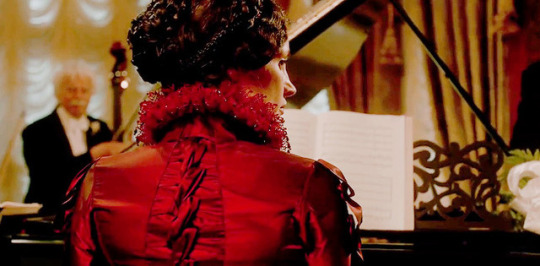
Compared to the two other components of the main trio, Thomas Sharpe’s outfits seem much more muted and sober. His clothes, same as his sister’s, are also too old to be fashionable, but made of high quality materials. The color palettes of his clothes are very dark and deep, with touches of deep blues and greens. When you transpose him into Allerdale Hall, he fits seamlessly within the decor, meanwhile he seemed out of space and out of time in the sunny and modern decor of Buffalo.

A desire for accuracy :
Historical accuracy is always a point of contention when it comes to movies set in a particular historical setting, in this case in the early years of the 1900s. And before we go any further, is historical accuracy even That important when it comes to an effective costume design ? I honestly think historically accurate costumes are very important when it comes to setting your movie. The visual immersion and world building when your story is set in a specific time and place, like for example, in this movie, set in Buffalo, United-States, and England, during the year of 1901, depends on these important elements, such as the costume design and the decor. Especially when a movie is not tending toward the fantastical. For this reason, I really do think that having period accurate costuming, design and makeup is incredibly important when it comes to immersion and creating a visually cohesive world.
Nonetheless, to me, this part of the costume design is less important than what the costume design says about the story and the characters. As I said earlier, costume design is a very subtle but powerful narrative and visual tool to use in filmmaking. And for this reason, I personally think it’s more important for a costume to be efficient when it comes to storytelling than to try to achieve perfect accuracy. Simply put, a costume designer is not someone whose aim is to recreate historical garments perfectly (if this is your jam, I follow a bunch of creators on youtube who actually do that, using historical sewing techniques as well). Their aim is to use the clothing for a storytelling purpose.
There is this thread by fashion historian and curator Hilary Davidson on the subject of ahistorical costume design and this is what she has to say about Crimson Peak:
“Kate Hawley's designs for Crimson Peak (2015) are immersed in artistic trends of the fin-de-siecle, making costumes that embody the period's aesthetic spirit without being completely literal”
When it comes to Crimson Peak, are the costumes historically accurate. For the case of Crimson Peak, the answer is yes and no, at the same time. More than creating historically accurate costumes, Hawley wanted to create an atmosphere, with dreamy costumes that would serve a narrative purpose, and use historical sources as a guideline and inspiration Liberties will often need to be taken to complement the story and to serve the purpose of storytelling nonetheless, I do think that the more researched and accurate the costuming is, the more complex and interesting it can be . and I do think it ended up being SO SO INTERESTING.
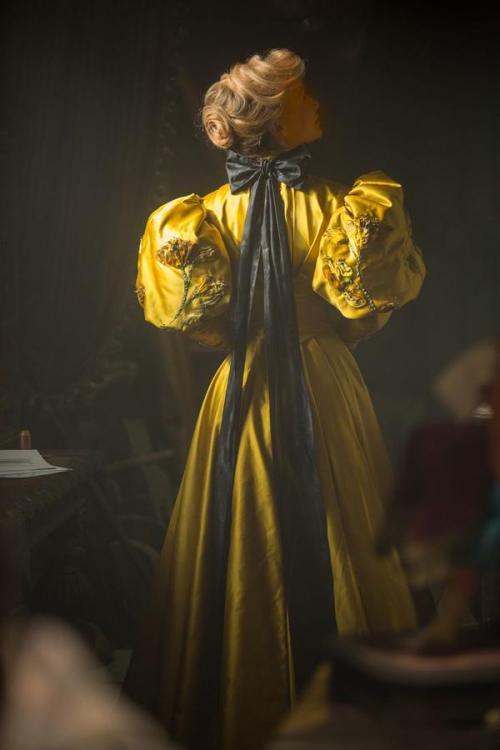
Costume design is more than simply making historically accurate costumes, a costume designer needs to know fashion history and fashion trends, but ultimately, their job is not to recreate exact replicas of the clothing of a certain historical period. What a good costume designer has to do, is to create a wardrobe that fits the story that is being told, and fits within the general universe it's set in and gives you information on the character. What Hawley did was to respect the silhouette of the period, from the foundation garments to the outer garments, and then, when it came to the actual costumes, she could play around with the details to convey a certain mood and narrative. The underpinnings always do define the general structure and shape of a garment, and it’s one of the most important elements when someone wants to construct a historically accurate costume. Even if, like Hawley, liberties are then taken when it comes to the actual clothing, the “spirit” of the clothes is respected. From the corsets and to the petticoats and all the subsequent layers, it was important for Hawley to have all of these elements in a historical accurate way, because it would change the posture and the demeanors of the actors. It shapes the way they stand and the way they move through the different spaces.
Visually, Crimson Peak is a masterpiece of a gothic romance. From the sweeping nightgowns to the imposing and sharp gothic mansions, and the scary ghosts behind the door, Del Toro and his team have created a movie that takes everything that is wonderful about gothic romance to the highest theatrical level, and I, for one, always enjoy this visual and cinematic experience.
58 notes
·
View notes
Text
the thing with the sc cost of running pets (and clothes! and tack! and possibly horses!) in sso is just that compared to “other games and other stuff you could buy for the same irl value” it doesnt seem worth the cost. it seems overpriced.
i dont care about the cost of jorvik ponies or anything else in-game. i care about the exchange rate of irl money to sc, and comparing what you get. there is obviously an aspect of “sse needs to earn back the work they put in” - but we don’t know where those limits are (without finding out how many of each pet, clothing item, etc, that they sell, and whether they would sell fewer or more if they lowered the costs, etc) and can’t say anything about them. afaik, there is no evidence that the only way for sse to earn back their investments is to sell a low/medium quality 3D pet for $10, or a decent quality 3D horse for $20. we DO know that the company is doing well, paying its staff well and treating them well (seemingly - ofc i dont work there), and can afford upkeep on many servers, just as a note.
for a comparison of something i also think is a dumb cost, is horses in rival stars horse racing (mobile), another game i enjoy! $30 for a coat recolour and some stats (horsey go brrr). there is only 1 horse model in rival stars. no different model or animations or anything whatsoever - literally just a different coat, with the added bonus that you can breed horses so the coat and stats matter. however, i dont think that makes $30 a reasonable cost for a recolour and some numbers, in my personal opinion that im allowed to have about any game. an interesting difference is that rival stars probably has a slightly older target audience than sso (which is interesting just bc adults are supposedly able to make more informed decisions and have their own money, and kids don’t).
obvs, when you sell any product you have to calculate what the expected monetary gain is, and what the expected production costs are, and whether those things will make it worthwhile or not. but you also should think about the actual quality of the product, who your customers are, etc etc... and... there is a point at which, even if “this item took this much work/time/money to make”, if the end result seems more costly than what a reasonable price is, maybe you’re going about the work the wrong way. maybe theres inefficiency in the work methods or poor prioritising if low/medium quality items are costing that much to produce.
and yeah, anything in sso is a luxury item, playing sso is a luxury, etc, no “extra” sc payments are necessary for gameplay aside from being star rider, etc, all true but not really relevant to my opinion. i also criticise other non-essential digital goods for being overpriced when i see them whether game related or not, and ofc physical goods but less relevant to the topic since they have a different production cost (digital goods have no material or shipping cost and no supply limit).
just my personal opinions and why *i* have issues with the costs of sc (and therefore most, but not all, sc prices in the game). coming from a game dev, artist, and very poor person who thinks a lot about economy without feeling entitled to anything.
19 notes
·
View notes
Text
Sonic and speed: are we misunderstanding them?
This article was originally written in Spanish by @latin-dr-robotnik on his blog - you can read it here!
Today on SHP, I’d like to bring attention to a topic that I keep noticing being discussed everywhere (especially now during quarantine), and that somehow worries me: are we misunderstanding Sonic and his characteristic speed?
During these last few weeks there has been a new, relatively unusual explosion of videos and comments on the Internet regarding Sonic and, relevant for today, what is the best game or the best level. The simplest reason has to be the lockdown we’re going through, and which is leaving us with more time to play or think about those games we want to play, or never will. On the other hand, the most cynical side of me believes that this boom of Sonic-related content is because Game Apologist’s video about S3&K and Sonic in general was so popular, it sparked the “interest” of other creators (the video itself is great, and I elaborated my opinions on it here). Whatever the case, there is a greater discussion about Sonic going on right now, and I feel like it’s not directed where it should be.

Before starting: there are a bunch of videos that helped me shape a good part of the opinions I’m going to explain today. You don’t need to watch all of them, and they’re not mandatory to fully understand this article, but if after reading it you’re left wanting for more, or you’d like to hear different options, I’d recommend you watch these:
1. Sonic and Speed (Errant Signal)
2. The First Levels of Sonic Games (Super Bunnyhop)
3. SONIC the HEDGEHOG: How Level Design Can Break a Game (Broken Base Gaming)
4. How Sonic Mania Makes a Level (RelaxAlax)
5. City Escape is Peak Sonic Game Design (ZoomZike)
6. Lost Valley Is Not Peak Sonic Game Design (ZoomZike)
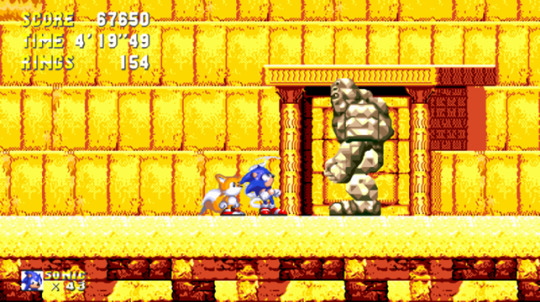
What is the problem?
In a series as big and ever-changing as Sonic’s, there is a wide repertory of formulas and possible answers to the question “how to design a game?”. In some cases we’re still looking for an answer, in others we’re looking for alternatives (I talked not too long ago about the accessibility of Sonic Mania and 2D Sonic in general – Spanish only!), and most of the time, the answer has already been given in the past.
This looking for answers in the past has taken us in many directions, like constantly looking back to Sonic Adventure to solve the great enigma that is 3D Sonic; but I’d add that the recent retrospectives about Sonic and its first 2D games have raised some criticism and questions that, while valid, end up muddling a formula that has proven itself to be effective and crucial in the design of everything related to Sonic.
What really worried me is the criticism about Sonic’s speed and the levels that are considered “slow”, and we’re going to delve into this.

The basic Principles of Sonic
Speed. Platforming. Exploration. These are Sonic’s basic Principles and have always been, from its beginning until today. These three concepts are at the core of not just the level design, but the games themselves as well. The best levels in the series know how to balance these aspects, and the best games are those that can keep a balanced flow, preventing the game from going too fast, and losing its exciting component along the way, or from going too slow and becoming boring, causing the player to lose interest. Naturally, in these games there have to be all sorts of levels: faster, more relaxed, more open and more labyrinthine, all coexisting in harmony and without going too far in one direction. Ignoring these Principles puts the quality of the levels at risk, and even our understanding of the character.
I would have put my own examples here, but just before starting to write this section I got some wonderful ones from Beevean. If you don’t remember her, she helped a lot with the article about the music of Classic Sonic, and I already warned her that if she kept posting examples this good, I would have had no choice but to feature her again. The discussion started from this post, and she says:
If you approach Sonic thinking its only characteristic is “gotta go fast”, the game you’re gonna get is Advance 2. The very flat, boring, “there’s no way to put normal obstacles in these levels so we’re gonna throw bottomless pits at the player until they get sick of them” Advance 2.
Some fast levels can be awful - Stardust Speedway is a disaster from a level design standpoint and the whole level seems to work against you. Some slow levels can be super fun - you rarely run in Lava Reef and you spend most of the time dodging obstables, but that doesn’t stop it from being one of the most beloved levels in S3&K. There’s no arbitrary reason that separates “good” levels from “bad” levels, it’s an amalgamation of many factors - plus of course your personal enjoyment.
And in her tags (because we both include more information in our tags than in our posts) she adds:
The levels that are widely considered bad usually put too much focus on one of the factors you mentioned.
Marble Zone is too slow and linear.
Luminous Forest is too fast and linear.
The Doom and Lost Impact are too labyrinthine.
And so on.
My personal example is Sonic Mania and its progression during the mid-game, from Flying Battery to Mirage Saloon:

Flying Battery is a long level, filled to the brim with speed and emotions, especially during Act 2. After beating the boss, the player is likely going to feeling exhausted after being thrown left and right, and so…
The following level is Press Garden. Act 1 is a relatively closed and relaxed level, but still moving at a reasonable pace. If the player is familiar with the level they can finish it quickly, but they still can take their time appreciating the view of the printing and the machinery of the zone. Act 2 enhances this, with an absolutely lovely view and an active but still relaxed flow…
Then there’s Stardust Speedway, which is divided into two completely opposite acts. Act 1 is a relatively fast level, but very relaxed and almost a Zen-like experience when the player lets himself be carried away by the starry night sky, and with a relative absence of lights or discomfort on the screen (enemies and obstacles aside). Act 2 is the other way around, a largely colorful, explosive, fast level (to the point that I, anything but a speedrunner, managed to finish the level in 31 seconds, 2:10 minutes if you include the fight with Metal Sonic), culminating in one of the longest, most intense bosses in the game that marks the halfway point of the adventure…
After such an exciting journey, the next level is Hydrocity, once again split in half with a calmer, more exploration-oriented Act 1, and an Act 2 that, similarly to the original level, is one of the most adrenaline-filled water levels in the series. The boss is intense as well, but verging on being tedious and not nearly as fast as the level itself…
And finally, Mirage Saloon. Every version of Act 1, regardless of the quality, are there to set up Act 2, a largely open, fast-paced level.
In short, the Mania experience is made of peaks and valleys of emotions and adrenaline, keeping the game to a reasonable pace and with a good dose of speed, exploration and platforming. The player can break the flow anytime to look for Giant Rings and other hidden goodies, and that doesn’t ruin the charm of the level. In the same way, the faster levels require the player to be familiar with them and to know how to platform to get the best results, without giving you free speed like it’s not worth it (looking at you, Advance 2).

Even the worst levels have the chance to redeem themselves, like for example Labyrinth Zone in the “Misfit Pack” Mania mod.
Breaking the Principles.
When a level or a game breaks the balance for too long, it might become too easy (the infamous “hold right to win”), too boring (the most common argument against Sonic 1 because of levels like Marble Zone and Labyrinth Zone), or too obtuse (the criticism against Sonic CD). The key word is “for too long”, as Beevean already explained how levels that prioritize one thing over the others can still be considered good stages by the majority of the fandom (example: Lava Reef, and I’d add Spring Yard and Final Egg).
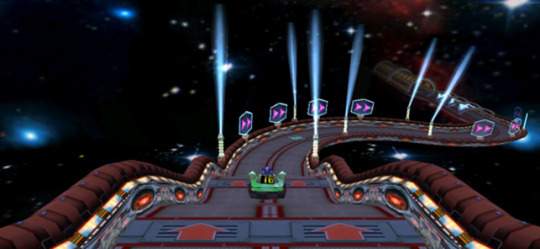
As I said before, Mania shows us how there are levels that prioritize certain aspects, but only for a few minutes at a time. Mirage Saloon Act 1 for Sonic and Tails may be a slow, boring level, but it’s only 3 minutes long in a game that lasts 2-4 hours. Same goes for Carnival Night Act 2, a long, tedious level, but that is still a 4-9 minutes long interval before getting back on track with Ice Cap and Launch Base.
3D Sonic is a much more complicated situation, as every game has its pros and cons. Adventure 1 is one of the games that experiments the most with the Principles in a 3D plane, but it breaks the flow of the stages with the plot and hubs worlds to explore (which are pretty divisive even to this day; for the record, on this blog we’re pro hubs). Adventure 2 gets rid of the time-wasting hubs but each character focuses on one Principle at the time: Sonic and Shadow focus almost exclusively on speed with some platforming, Tails and Eggman on action and platforming, and Knuckles and Rouge are all about exploration (and RNG…). Sonic Unleashed does pretty much the same, just reintroducing the hub worlds, while Sonic Generations is at its core a balanced mix of speed, platforming and exploring (plus a much smaller hub between levels), and… well, I think I made myself clear. 3D Sonic is a mess of ideas that orbit around the fundamental Principles, but that for some reason are never kept consistent between games.
Going back to utterly breaking the Principles, there’s one level above all that destroys every one of those extremes, never taking the middle road and without worrying at all about what players might think of it. This level is…

Eggmanland
If Sonic Mania is a clear example of a relatively balanced flow, in its mid-game at least, Eggmanland may be the biggest example of what happens when each and every one of the Principles is taken to its extremes. Let me explain:
Speed: Eggmanland can be both too fast for the player to react, between QTE and super quick jumps that may lead to your death if you’re not fast enough (and you rarely will), or too slow of a slog to navigate (the long Werehog sections).
Platforming: Eggmanland can have too much tricky precision platforming, made even harder due to a lack of a drop shade (the second Werehog section is infamous for this), or it can throw stretches where you do almost nothing but hold X and maybe go through a QTE, which if failed lead to your death once again; at worst you have to wait, which sends us back to our previous point.
Exploration: Eggmanland can be a giant, confusing labyrinth (there is no shortage of stories of player getting lost in this behemoth of a level), and at the same time it can have some long linear room to room progression, separated by doors about as fast as Big the Cat.
I should say that, despite all of this, I love Eggmanland a lot, and same goes for Beevean; but this is something that has to do with what we mentioned before, personal preference. From a technical standpoint, and according to many players, Eggmanland is an absolute nightmare.

Are we misunderstanding Sonic?
Going back to the central topic of this article, I believe that I put enough emphasis on the importance of balance in Sonic, so let’s go back to the previous question: what is the problem?
In short, I disagree with the voices that call for redirecting Sonic towards “fast”, adrenaline-filled stages. These people, with their own retrospective, are doing some sort of revisionism with Sonic levels, automatically branding levels that aren’t as fast as others as “bad”. We’re ignoring the true value of platforming and exploring the levels, and the perception of the character is at risk.

Like Beevean said, looking at Sonic just as “gotta go fast” is, plain and simple, absurd. Sonic is much more than this restless teenager that, just like that movie with the bus, if he doesn’t run at speeds higher than 90 mph his heart will stop. Yes, going fast is a big part of his initial appealing and his way of life (“My stories only end when I stop running”); but when Sonic’s speed is brought up in these discussions, the rest of what makes the character is left outside: how much he admires nature and how much he likes to take a rest every now and then before the next adventure. Sonic OVA, Sonic Adventure, Sonic X and even Sonic Lost World’s ending show that Sonic is not just speed, but also rest, curiosity, exploration. There are even cases where the journey and the friends and memories made along the way are much more important than the destiny itself (Sonic Heroes, Sonic Unleashed), and on several occasions it’s been shown as an actual weakness of the character the fact that he would act recklessly and under the influence of the fateful “gotta go fast”. This aspect of Sonic’s attitude might probably be product of the aggressive marketing campaigns this character endured (ever since the Genesis “Blast Processing”), but it doesn’t tell the whole story, and it’s unacceptable to enforce this line of thought over everything we know about the character.
And to end this long section where I was hinting at one of the most important points of one of the most thoughtful games of the series, let’s not forget that Sonic is pretty aware that everything has a beginning and an end, because that’s the Nature’s way of things and we have to live life at its fullest, for it is finite. Running at top speed is just one of many ways Sonic lives his life, and his eyes will forever be filled, not so much with speed, but with curiosity.
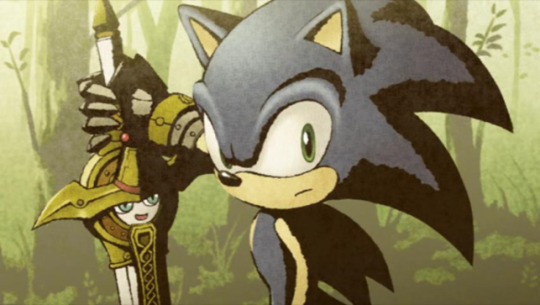
Conclusions
To recap this long article, let’s remember that
Speed, Platforming and Exploration are the three basic Sonic Principles. The momentum in the games comes from the interaction between these elements.
Speed is not something that’s delivered for the sake of being delivered: it usually is a reward or an incentive to keep the player interested, engaged and excited for what’s to come.
Breaking the Principles impacts the experience of the game in many aspects… unless you’re Eggmanland and you’re breaking every single Principle in one level anyway.
To narrow Sonic down to just “speed” is to ignore everything else that this character represents. “Gotta go fast” is a facet of his design and personality, but not the only one.
Starting from this, we can sit down and discuss about “good” and “bad” levels in the series all day long, but I don’t think it’s necessary. Now that we’re about to discover what’s next for the series, I believe it’s important to clarify what Sonic represents in every stage, so that with some luck we can see better consistency and quality in his future adventures.
Speaking of this last point, I just remembered The Geek Critique’s series of Sonic retrospectives, another series of videos that inspired me and I found enlightening. Do you guys remember the videos I linked to at the beginning? Well, it’s time for you to watch them :P (if you want to, of course)
(I’d like to thank Beevean again for suggesting the best examples I could have needed. Seriously, she helped much more than it looks)
What do you guys think? What is the ideal Sonic level, and why? Do you agree that Sonic is much more than a speedy blue hedgehog? In the meantime, we’re hopefully going to see each other very soon. See you next time!
youtube
I feel this theme is strangely fitting to conclude this article, lol
~
After the Spanish article was posted, I reblogged with this:
To add something more, I was chatting with a friend of mine who pointed out that, for all the talk in the fandom that we want to see less linear levels, most of the fan favorites are pretty linear - Ice Cap, Speed Highway, City Escape, Rooftop Run… I told him that yeah, linearity isn’t a synonym of bad level design because linear levels can still be enjoyable: with these particular cases, what makes them different from a random Lost Valley is that they have other elements that make them stand out (snowboarding, running down a skyscraper, skateboarding through San Francisco, climbing the Big Ben…). Plus they have something to compensate for the linearity, like fluid platforming.
In the case of Ice Cap and Speed Highway, there’s also a contrast between their halves: IC Act 1 is cramped and heavy on platforming, while Act 2 is much faster and without many obstacles, almost as a reward; Speed Highway starts out as fast and exhiliarating, with little platforming getting in the way of running, but the At Dawn section is a short open space, to let the player catch their breath, to the point that even the music and the aesthetic are much more relaxed. So, as you said, the balance is kept, and when you add a memorable setting and music, you have a great level in your hands.
Thank you @latin-dr-robotnik for giving me the permission to post this! I just had to translate this fascinating article to share it with everyone :>
131 notes
·
View notes
Text
422. ”Carrie” (May 12 - May 15 1988)

I adore reading about flops. One of my favorite flops to read about is Carrie the musical. A doomed production from the start. Millions of dollars wasted. Bad costumes. Filler songs.
Similar to my Simpsons season 10 review, I wanna give something to the worst aspects of the show. With Simpsons, bad episodes were awarded Marge’s homemade Pepsi. For Carrie, I think I’m going to give the bad parts the “Vending Machine Maxi Pad” award.

As most anybody who follows Broadway flops knows, clips from Carrie are scarce and are in poor condition on YouTube. Most of the actual clips are from when the show was in test productions in Stratford Upon Avon, but the music has been replaced with the Broadway soundboard. So, keep that in mind. Most of the time you can’t even make out what’s going on. Here’s the closest copy of the entire show I could find on YouTube, from the Sratford Upon Avon production.
I know people bash the musical, and sometimes it’s rightfully so, but two things are consistent: Linzi Hateley who played Carrie, and that orchestra that is on.point. Check out the overture.
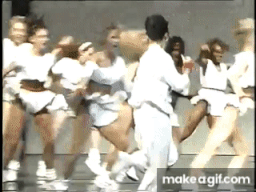
(source)
The show begins with girls cheering in gym class in the beginning of an aerobics lesson? The white gym shorts look like diapers. That’s the first of many costume mistakes.
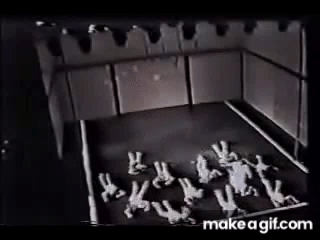
The song is a banger, I love Darlene Love playing the gym teacher, she’s my favorite part of the song. The only part that is cringey to me is when the girls sing “I go CrAzZyyyyy” and they get on the ground and dance like a toddler having a temper tantrum in a Toys R Us. Since the audio quality is so bad in these clips, I thought at one point the girls were singing about not being caught picking their nose, no, the lyric is:
Bought the clothes, did my nose,
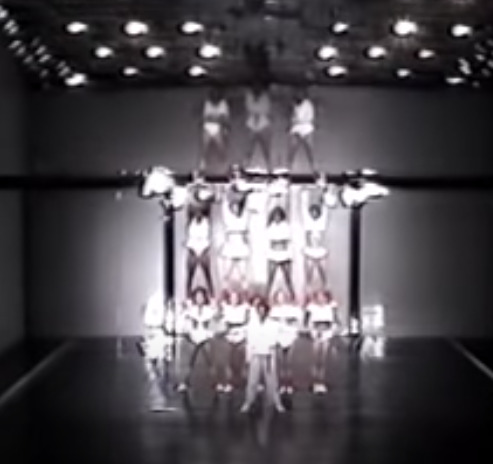
Near the end of the song, the girls are on these rising rafters? It took me for-ever to realize that they were simulating a cheerleader pyramid, and that Carrie had snuck in near the end of the number to be on the bottom of the pyramid. Oh, and she causes it to fall and someone tells her to eat shit.
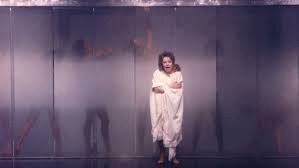
“Dream On” is the song that the girls sing while in the showers. Why yes, it does look like they’re in the nude due to the poor quality of the video. The song is ok, it gives total night driving home from the mall in the late 80s early 90s vibes. Although one girl says the line, “Six foot three and he's in his forties!”. WHAT.
Carrie breaks those vibes at around 3:44 by screaming that she’s bleeding. When Miss Gardener slaps Carrie, a cymbal plays. I love it.

I like to imagine that when the girls threw the tampons and pads at Carrie, some flew into the audience.

“Carrie” is shrill at first, and then it turns into a bit of snoozefest. Linzi sings the name “Carrie” about 458 times.
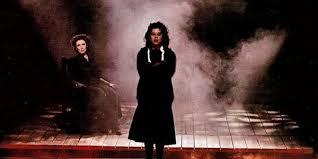
Betty Buckley who previously had played the original Grizabella in Cats. and who played the gym teacher in the original movie plays Carrie’s mom. Her song, “Open Your Heart” is pretty good. It’s a nice little break before mom goes bottoms up on Carrie for getting her period (”And Eve Was Weak” [Stratford version with Barbara Cook]):
Carrie: I was in the shower and...
Mom: You’re forbidden from showering with the other girls...
Carrie: I started to bleed!
While Carrie spends the rest of the night in a cellar, the popular girls are at the drive-in. Now, this musical cost over $7 million dollars 1, but yet this was the best set they could think of for a drive-in movie theater:
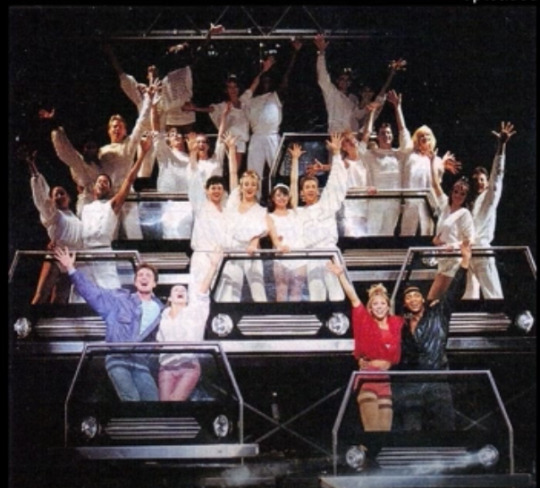
It looks like something out of a high school play -- which I guess makes a little sense since they are high schoolers? I’m grabbing at straws here. It cost so much money to put Carrie on, what’s a few more dollars to have two real hollowed out cars on stage, one with Chris (in the red) & Billy (in black) in it, and the other with Sue (pink leggings) and Tommy (purple windbreaker)?

“Don’t Waste the Moon” is the song sung at the drive-in, with Sue having regrets about throwing tampons at Carrie in the beginning of the song. The song is very 1980s, and it kind of doesn’t fit in the musical. Gene Anthony Ray’s (Billy) talent is wasted here.

It’s time for some “Evening Prayers” for Carrie where she discusses with God her new telekinesis powers. Meanwhile Carrie’s mom is being a worrywort. During the Stratford production, Carrie’s mom is in a rocking chair over there looking like Whistler’s Mother.
“You’re going to tell Carrie that you’re sorry!” belts out Miss Gardner. In the musical, Chris seems more obsessed with torturing Carrie than in the movie or book if that’s even possible. Sue is like, “What did she even do to you?”. Even Billy asked earlier, “Who the hell is Carrie White?”.

Oooof. Seeing the gym teacher try to cheer Carrie up by singing a song about the prom (”Unsuspecting Hearts”) and how she could go too is patronizing. Even if its sung by Darlene Love.
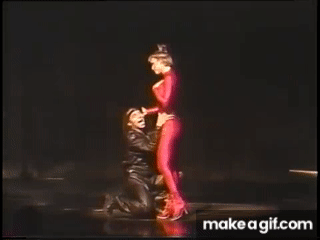
“Do Me a Favor” might be the most infamous song from the musical. It’s the song I see referred to the most when I read bad reviews. For some reason Chris is wearing a metallic red bodysuit and Sue is wearing a light pink bodysuit. Are they supposed to be that cliche devil and the angel on the shoulder thing?
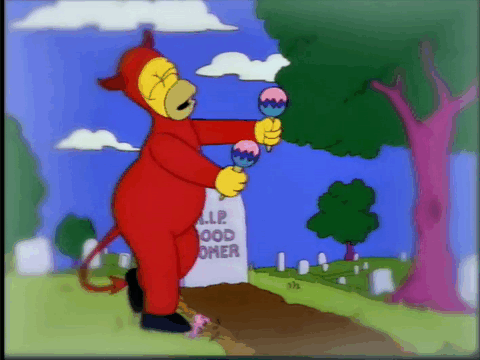
Chris looks like Evil Homer!
I’m going be the unpopular opinion here and say that I love the song! The erratic dancing also fits with the song.
Carrie tells her mom before “I Remember How Those Boys Would Dance” that Tommy is sweet and polite, but the audience doesn’t know that. Tommy is barely a character in this production. In the end, Carrie uses her powers to shut her mama up.

From what I gather in “Out for Blood” (audio) where Chris and Billy go looking for a pig to kill, the chorus dancers are the pigs? The video quality is so poor. Chris had another crazy ass red outfit on, some sort of shiny red skirt and a crop top. The costumes in this are just horrible. It was like the wardrobe budget was $50.
This song is so.so.bad. It reminds me of whenever Rocko from Rocko’s Modern Life would see a movie trailer or a parody of something on TV for some reason?! Or the “gotta get that Reptar song” from Rugrats when the kids saw Reptar on ice. Especially when the chorus tells Billy to kill the pig:
CHORUS
Cha! Kill the pig, pig, pig!
CHRIS
Go!
CHORUS
Kill 'im, kill 'im, kill, kill!
We'll make him bleed!
CHRIS
Go!
CHORUS
Get the blood, blood, blood
Oooh, blood!
CHRIS
Oh, baby show...
CHORUS
Kill the pig, make 'im bleed
Let's get the blood, that's all we need!
Sue’s song “It Hurts to be Strong” is a bit of a throw-away. It gets a vending machine maxi pad award. Moving on. It’s filler
In “I’m Not Alone”, Carrie sings while using her powers to move things around in her room. What things? I don’t know the video quality was so bad. That’s another thing! The sets are nonexistent! I wouldn’t know we were in Carrie’s room unless the Playbill told me. It’s another forgettable song. Three in a row!
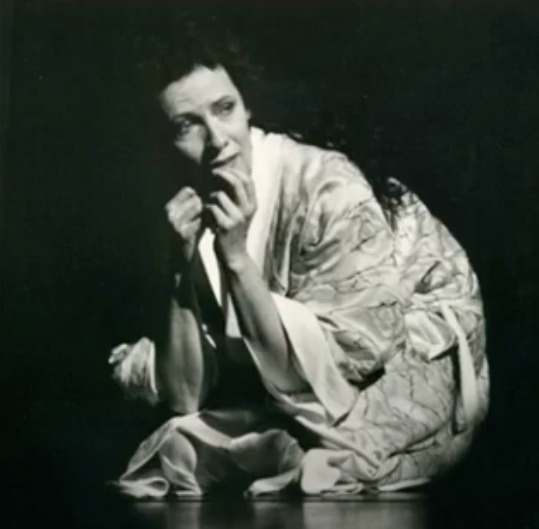
Betty Buckley saves the day in, “When There’s No One”, a sad song about facing life without Carrie being her subordinate.

I don’t understand the prom dresses in “Wotta Night”, they’re all garish giant white numbers that make the actresses look about 20 pounds heaver. The guys look like that Rio doll from Jem. The costume designer couldn’t just go to Alexanders or A&S and buy prom dresses? You know, why am I even asking at this point. We all saw what Chris has been wearing this whole time. There is a disco ball thrown aside in the corner instead of hanging up. More on that later.
The song sounds way too much like that song “Rock on” by David Essex. Automatic Vending Machine Maxi Pad.

Here’s a cute rehearsal clip I found of “Heaven”, the song sung while the Prom Queen and King ballots are being counted. Unfortunately, the audio is bad. Chris is there to remind us that she’s still out for blood.
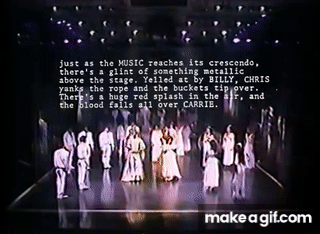
Finally, finally it’s time for Carrie the prom queen to get drenched with blood -- but the thing is, due to microphone technology back then, Carrie really couldn’t have blood dumped on her. Chris and Billy just run up to her and half ass pour the bucket at her. Could the set designer not suspend the bucket from above the stage? Is that also why the disco ball is thrown in the corner? I don’t even think she has stage blood on her during “The Destruction”, (which is the best song from the musical). I think a red spotlight over Carrie signifies the blood.

I think Linzi is really only truly covered in blood for press shots.
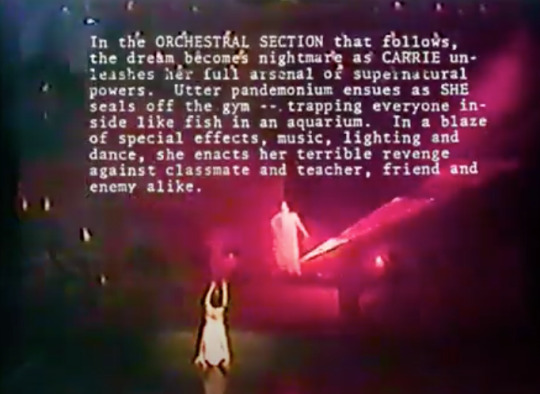
Anyway, the Destruction, I love it when she screeches “DOESN’T ANYBODY EVER GET IT RIGHT??! DOESN’T ANYBODY THINK THAT I HEAR?!” It’s the best. I could listen to it all day and I almost did the other day.
Due the poor video quality, I can’t really tell how the prom-goers are dying. They’re kinda just twitching there in the laser light or slamming themselves against the clear barrier that descended from the stage to signify Carrie closing the doors to the gym.

After Carie kills everybody, this giant white staircase descends and covers up the gym. I read somewhere, I forgot where, that its supposed to be the school stairs? We’re led to believe that Carrie’s crazy mom ran to the school. The first time I saw it, I thought that it was Carrie and her mom getting ready to go to heaven. I thought maybe someone over at the set department took the classic song too literally.

It appears that while the stairs are descending, Carrie smears stage blood on her.
The reprise of “Carrie’ is so much better than the original. Carrie stops her mom’s heart cold mid song. Then she slins down the stairs and Sue catches her. In an interview on playbill.com, Betty Buckley says that on opening night (I don’t know if she meant the first preview, or the official opening night), there were boos from the audience at the end, but cheers for Linzi and herself. I believe it. Betty and Linzi were amazing. Darlene Love was amazing. The rough scenes are the scenes with the school kids. They’re awful, in the words of my boy Jay Sherman, “they’re awful I tell you. aw.ful.”

(relevant prom .gif)
Facebook | Etsy | Retail History Blog | Twitter | |YouTube Playlist | Random Post | ko-fi donation | Instagram @ thelastvcr | other tumblr
1. Rothstein, Mervyn. “After Seven Years And $7 Million, ‘Carrie’ Is a Kinetic Memory (Published 1988).” The New York Times, May 17, 1988, sec. Theater. https://www.nytimes.com/1988/05/17/theater/after-seven-years-and-7-million-carrie-is-a-kinetic-memory.html.
New York City Broadway reviews on the news in NYC for Carrie. That first reviewer, Stuart Klein, I love him. I’ve watched several of his reviews on flops on YouTube. Joel Sigel who was the Good Morning America film reviewer is here too.
Archive of Betty Buckley interview.
#carrie#carrie the musical#1988#betty buckley#linzi hateley#charlotte d'amboise#broadway#musicals#broadway flops#flops#the 1980s
8 notes
·
View notes
Text
Memories : Top 15 Films of 2020

If 2020 taught movie fans anything, it was that we shouldn’t take things for granted. On the dollars and cents side of things, movie theaters were already facing an uphill battle to stay sustainable, but the “shelter-in-place” practice of March and beyond decimated box office returns, with many theaters yet to reopen (if they will open at all). In terms of famous names and faces, the list of those who passed away featured numerous icons : Kobe Bryant, Kirk Douglas, Max von Sydow, Honor Blackman, Carl Reiner, Ennio Morricone, John Saxon, Wilford Brimley, Chadwick Boseman, Sean Connery, Tiny Lister Jr., Adolfo ‘Shabba Doo’ Quinones and many more transitioned to the great beyond. Netflix, Hulu, Amazon Prime, Shudder and a number of other streaming services saw themselves step into the forefront of the entertainment provider realm, with Warner Brothers and a handful of other studios making announcements that they will be following suit for at least 2021, if not for good.
With all of this uncertainty and chaos, however, the year 2020 was a surprisingly strong one, in my opinion, when it came to cinematic output... so much so, in fact, that aside from a number of Honorable Mentions, my list of top films was expanded to 15 in order to accommodate all of my choices. For anyone who has checked out my lists from previous years, you will know that I did not see every film released this year, but I did make my best effort to cover as wide a range of films as possible. Enjoy the list, and be sure to support film in whatever medium you are able to moving forward so that it can thrive.

HONORABLE MENTIONS
The 40-Year-Old Version (dir. Radha Blank)
A nice little personal film that spoke to my hip-hop sensibility, as well as that ever-present awareness of the inevitability of age, and how it can skew our perspective in regards to our achievements.
Ava (dir. Tate Taylor)
This isn’t the action film that’s going to reinvent the wheel, but if you look at action films like wheels, this is a quality wheel. Outside of Common, I couldn’t really find much to shoot down... this will definitely be one I consider the next time I have company and we’re looking for something fun to check out.
Bill & Ted Face The Music (dir. Dean Parisot)
I honestly would have been satisfied with just two films in this franchise, but surprisingly, a third entry was created that didn’t ruin my overall enjoyment of the previous two films. Keanu Reeves and Alex Winter jumped in without missing a beat, a healthy dose of familiar faces popped back up, and the new cast additions weren’t too jarring... it’s nice to know that a pair of my favorite childhood films are officially now part of a trilogy.
Borat Subsequent Moviefilm: Delivery of Prodigious Bribe to American Regime for Make Benefit Once Glorious Nation of Kazakhstan (dir. Jason Woliner)
This was possibly the most surprising release of 2020... outside of a couple of news blips that Sacha Baron Cohen made during production, not a lot about this film was leaked prior to its release. For such a dated character and a seemingly outdated style of humor, Borat once again exposed the simplest parts of society in an incredibly insightful (albeit cringey as all get-out) manner.
Guns Akimbo (dir. Jason Lei Howden)
One of the most fun films of 2020. Somewhere, the creative minds behind Nerve are wishing that they’d made this film instead.
Henrietta and Her Dismal Display of Affection (dir. Jeffrey Garcia)
Jeffrey Garcia is the homie, and I’ve had the pleasure of being in a number of his short films, so when he announced his intentions to write and shoot a feature film in 2020, I was completely on-board. Miraculously, he was able to film the movie while the world was being ravaged by COVID-19, and though I cannot publicly announce details yet, this film has definitely already met (and likely succeeded) his expectations.
The Midnight Sky (dir. George Clooney)
With each film that George Clooney directs, I realize more and more than he is an old soul trapped in a body idolized by the new school of film. That being said, it’s nice to know that there are directors out there willing to embrace patient, silent and contemplative moments while simultaneously withholding from force-feeding viewers exposition.
Tenet (dir. Christopher Nolan)
This was possibly the most anticipated release of the year, considering it was the king of the IMAX release crowd in its pre-release promotion. After a small delay due to COVID-19, it was one of the first films released in hopes of testing the movie-going waters during what was sure to be a diminished period of time, which probably hurt its numbers. Too many, the film was confusing, and the nit-picking was fierce from the criticism contingency, but in all honesty, this was pretty impressive Nolan fare... certainly a good second movie in a Nolan double feature.
The Trial of the Chicago 7 (dir. Aaron Sorkin)
I cannot tell a lie... I was hugely impressed with how Sorkin managed to reel his personality and voice back in order to let this well-known, controversial moment in time present itself. Sorkin has a tendency to be the star of his films, be it when he is in the writer or director role, but for this film, he managed to focus the best parts of his skillset into a highly respectful, educational and inspiring tale that fit the tumultuous summer we endured.
VHYes (dir. Jack Henry Robbins)
I remember seeing this trailer as 2019 was coming to a close, and it was a film high on my list of desired viewing. Then 2020 reared its ugly, stupid head and many releases disappeared into obscurity or found themselves delayed. Luckily, this one slipped through the cracks and found a home in the streaming world, which in all honesty, suited its presentation very well. One of the most delightfully weird films of the year, hands down.
Vivarium (dir. Lorcan Finnegan)
Of all the films cut from my Top 15 list, this was the toughest cut to make. I went into the film totally blind (with Jesse Eisenberg and my respect for his acting chops being the sole selling point), but this film really hit a lot of my buttons... it’s trippy as can be, there is a character that is freakishly unique and wholly unnerving, and the production design leaves a lasting impression. Don’t let the Honorable Mention designation fool you... this one is a winner.
Wonder Woman 1984 (dir. Patty Jenkins)
The Christmas gift that the masses collectively decided that they did not want. Much like Ava, there is one glaring aspect of this film that I could have done without, but otherwise, I found this to be an enjoyable film. Gal Gadot was made for this role, while Kristen Wiig and Pedro Pascal stepped up to the plate and impressed. If you’re looking to be blown away, the Wonder Woman franchise isn’t the smartest place to go, but if you’re looking for entertainment, there’s plenty of it here.

THE TOP 15 FILMS OF 2020
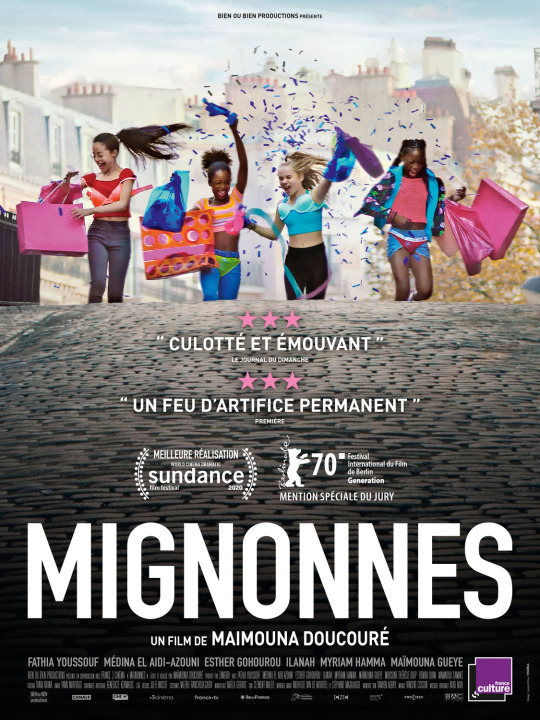
15. Mignonnes (dir. Maïmouna Doucouré)
This one started off the year with plenty of controversy. What was an award-winning tale about womanhood and the difficulties surrounding coming of age in an ever-changing and evolving world quickly devolved into a campaign to ban the film (and Netflix). Many people overlooked the film as a cautionary tale about what access to the Internet and the sexually-charged nature in which women are portrayed can do to developing girls, instead choosing to accuse the film of being fodder for malicious types seeking to exploit the sexualizing of young women. More than anything, in my opinion, Mignonnes served as an example of our outrage-fueled culture and the way it tends to skew our perspective and/or our ability to take art at face value.
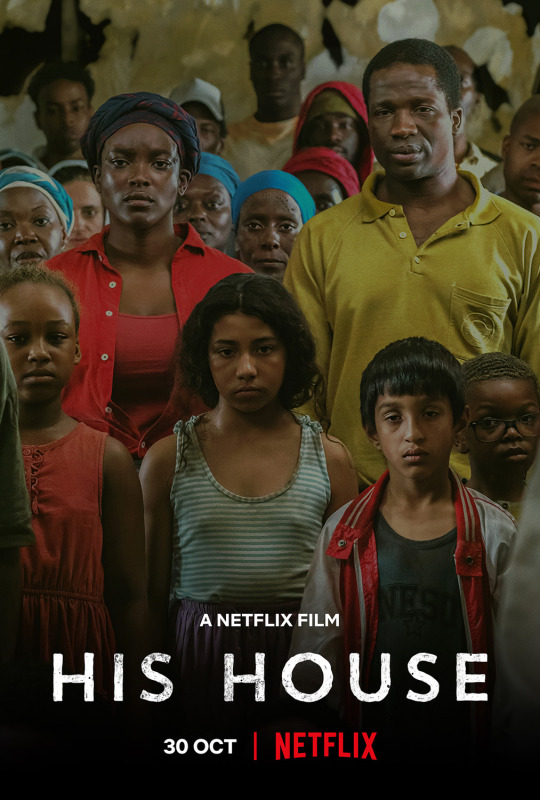
14. His House (dir. Remi Weekes)
As I’ve mentioned many times over the past week or so on this blog, horror films were one of the few genres that found a benefit from the film industry’s transition to streaming services for primary access to film. While a number of traditional horror films received notice, His House took the opportunity to not only make a pure horror film, but one that spoke on racism and the conditions that asylum-seekers and refugees face. The film is well-acted, the production value is high quality, and it’s paced beautifully... while not the highest film on this list, it is certainly one I will encourage others to see as time goes by.
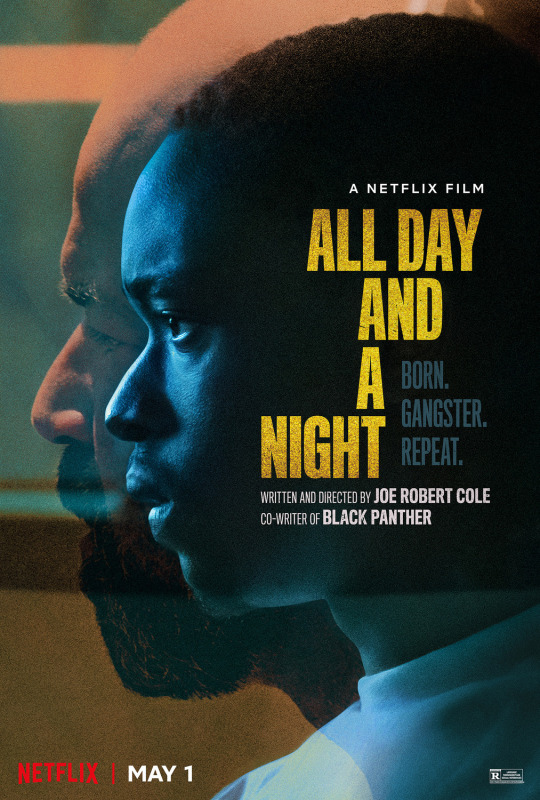
13. All Day and a Night (dir. Joe Robert Cole)
When human nature reared its ugly head during COVID-19 in the form of numerous race-related killings, multitudes of businesses quickly adopted the Black Lives Matter mantra, with film distributors and streaming services taking advantage of the moment to produce and release content relevant to cultural and social awareness. Netflix was no different, and of the many films they released in the wake of the harrowing events, All Day and a Night is the one that feels the most sincere and honest in its approach and presentation. The streets of Oakland are presented with a vast array of characters, each with complex backgrounds and states of mind, all of which helps the viewer understand the pressure many minorities live with and process on a daily basis.

12. She Dies Tomorrow (dir. Amy Seimetz)
Execution is king, even when applied to the simplest of premises, and She Dies Tomorrow is a shining example of this. In a very John Cassavetes move, director Amy Seimetz took her payment from her appearance in Pet Sematary and used it to fund a personal project that more than likely would have been ignored by studio heads. The result is a hypnotic, entrancing and haunting film where stillness and anticipation play antagonist, while we as viewers feel the need to transpose ourselves into the protagonists we are presented due to their stilted but emotional performances. Hopefully this one finds some notoriety in the cult classic realm as the years pass.
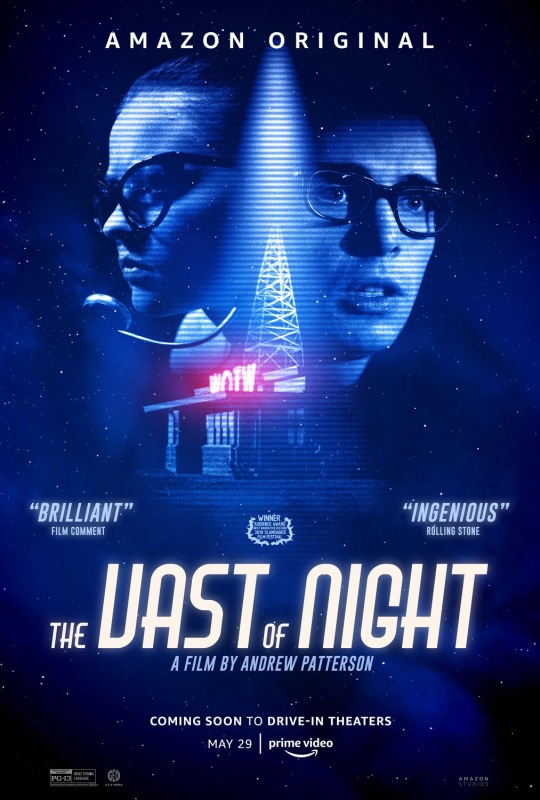
11. The Vast of Night (dir. Andrew Patterson)
For a debut film, The Vast of Night handles itself with a surprising amount of confidence in its vision. The immersion is nearly instant as we are first placed in the premise of a TV show, and then a 1950′s town, but once the actors and camera get going, it’s up to us as viewers to strap in for the ride. The story is deeply intriguing, the performances are strong enough to carry a very dialogue heavy movie, and the final act is chilling in its reveals. I will be surprised if this one finds its way to a Best Original Screenplay nomination due to it being a debut film from a relatively unknown writer/director, but if it manages to get the nomination it will certainly be a well-deserved one.
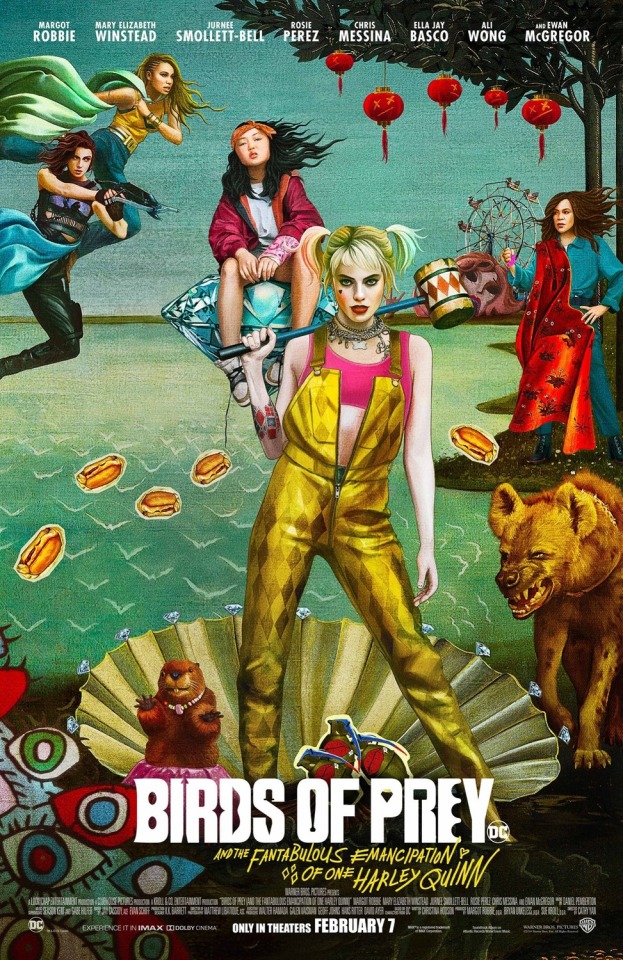
10. Birds of Prey (and the Fantabulous Emancipation of One Harley Quinn) (dir. Cathy Yan)
The movie that broke the list. If someone would have told me in 2019 that a film directly connected to Suicide Squad would be anywhere on a Top Films list I curated, I would have laughed dead in their face, and yet, here we are. It’s like every good idea that was poorly executed in Suicide Squad found new life in Birds of Prey, which makes the film not only an entertaining watch, but a satisfying one. Not only is Margot Robbie perfect in this film (as well as given a break on the exploitative costuming), but Mary Elizabeth Winstead arguably takes a stab at stealing the show with her performance. Don’t let the DCEU association fool you... Birds of Prey is the real deal.

9. Never Rarely Sometimes Always (dir. Eliza Hittman)
Probably the most contemplative film on the entire list, and impressive in its nature for sure. To my knowledge, the cast is made up of mostly unknowns (unless I’m sleeping on actors and actresses, which has been known to happen), and as a result, a tough slice of life to swallow is presented in an extremely grounded nature. Sidney Flanigan gives a powerful performance, hopefully the first of many.
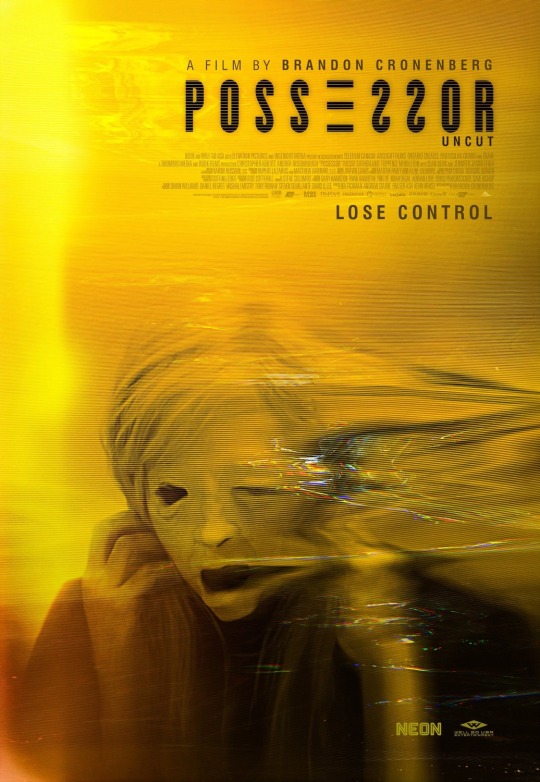
8. Possessor [Uncut] (dir. Brandon Cronenberg)
Easily the most “what the f-ck” film on this list, and certainly one worthy of the Cronenberg name. Andrea Riseborough has been on my radar since Birdman or (The Unexpected Virtue of Ignorance) and Mandy, and seeing her in a lead role confirms her talent. I’m a sucker for science-fiction films that don’t rely on digital effects and elaborate set pieces, and Possessor rings both of those bells with a vengeance. I watched the uncut version, which has a couple of extremely brutal sequences that will unnerve even the most hardened viewer, but these sequences only serve to drive home the lost nature of Tasya, our protagonist. This one isn’t for everyone, but for those who can stomach a bit off graphicness and process a narrative that doesn’t spoon-feed you answers, this one is a must see.

7. Da 5 Bloods (dir. Spike Lee)
Spike Lee has always been a huge influence on me as both an aspiring filmmaker and a fan of the medium, but I’d be lying if I told you that his last decade was a memorable one. Outside of BlacKkKlansman, Lee has found himself falling short of his vision more often than not, but Da 5 Bloods is a tonal and stylistic bullseye. Fans of Lee will dig it, fans of Vietnam films will dig it, and anyone who had an inkling of respect or admiration for Chadwick Boseman will be moved. If Lee continues to make films as good as this one, he may find an entirely new generation of fans as a result.
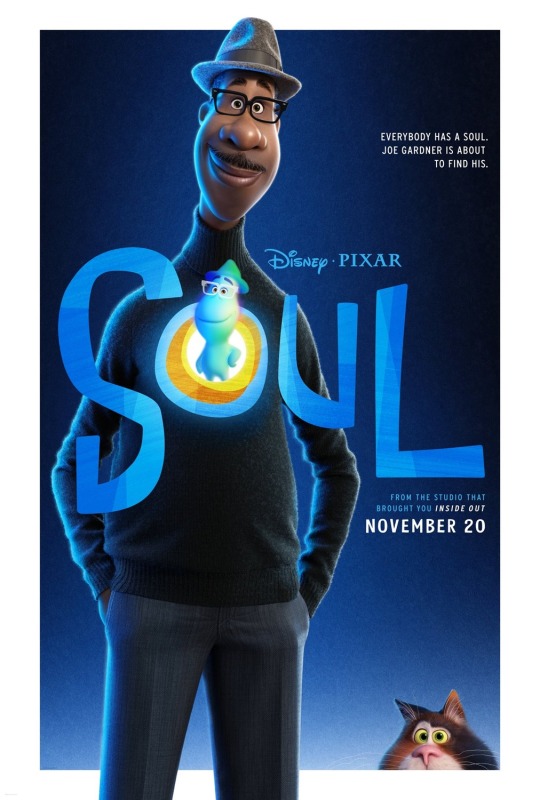
6. Soul (dir. Pete Docter)
As mentioned at the top of this list, people love to try and sink films due to their own personal agendas, and Soul found itself in the crosshairs prior to its late 2020 release. Many people were upset that a minority character would not only spend most of the movie as a blue blob, but would also seemingly serve as a tool for another character’s “salvation”. That being said, once Soul dropped, anybody with common sense dropped those stances and realized that Pixar had not only made a stunningly beautiful film, but one that likely spoke to adults more than children. Plain and simple, Soul is a bonafide instant classic.
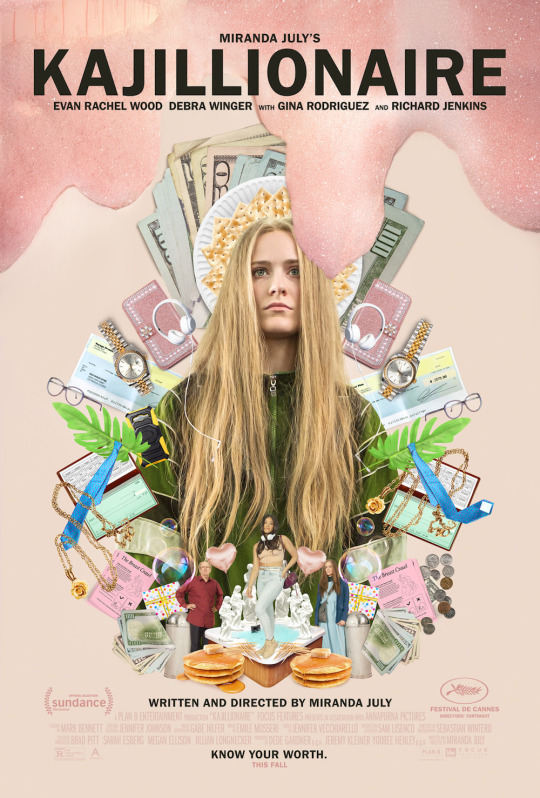
5. Kajillionaire (dir. Miranda July)
If Evan Rachel Wood doesn’t win an Oscar for her performance in Kajillionaire (or at least garner a nomination), Hollywood needs to collectively have their head checked. Every year worth its salt has a weird, quirky but loveable film, and Miranda July more than succeeded in making one for 2020. The humor, both physical and dialogue-based, is on point, and the bittersweet nature of the story is gut-wrenching as the film progresses. This one was probably the biggest surprise for 2020 in terms of prior awareness versus post-watch admiration.

4. Ma Rainey’s Black Bottom (dir. George C. Wolfe)
The final film of Chadwick Boseman’s short but prolific career is one that allowed him to exist in the wake of his reality, making his performance powerful and (seemingly) cathartic. He is surrounded by supreme talent on all sides, as there are no weak performances in this film, and despite it essentially being a play shot for film, it feels far from limited, contained or constrained. Not only does it speak on larger issues of the commodification of Black pain and talent, but it may serve as a vehicle for a posthumous Oscar for Boseman.

3. The Devil All The Time (dir. Antonio Campos)
This was the first Netflix original that made me really and truly respect them as a film distributor. The list of talent for The Devil All The Time is truly impressive, and Tom Holland knocked his lead role out of the park. Robert Pattinson is great as always, and the way that the story winds back into itself keeps you locked in and connected until the credits roll. For something that came out so many months ago, it’s respectable that it was able to hold such a high position on a list that was as fluid as any I’ve ever put together.

2. Mank (dir. David Fincher)
For a time, this was the hands down film of the year on my list. Gary Oldman has basically become a “can do no wrong” actor, and his performance was amplified by David Fincher’s ability to emulate the look, sound and feel of a bygone Hollywood era. On top of this, the built in intrigue that comes with handling anything remotely connected to Orson Welles is present, making Mank almost feel like a companion piece to the prolific film that is Citizen Kane. If The Devil All The Time was a victory for Netflix, then Mank was the win that put them into a true spot as contenders in the future of film distribution.
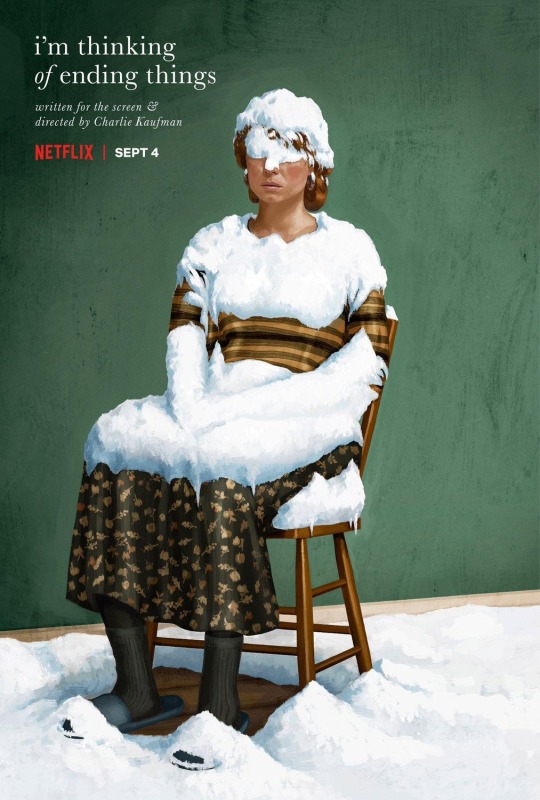
1. I'm Thinking of Ending Things (dir. Charlie Kaufman)
Where does one even begin with Charlie Kaufman? Time and again, he proves to be one of the most truly unique voices to gain fame. For I’m Thinking of Ending Things, Kaufman seemingly returns to his foundation of odd, offbeat love stories, only to take us on a journey of truly mind-bending and psyche-warping proportions. Of all the movies on this list, this is the one that almost demands repeat viewings, as one must have an idea of the entire journey before they can understand the individual aspects laid out. If dialogue isn’t your thing, then this one may not hold you, but that would be a shame, as this beautiful mystery stands head and shoulders above the rest of 2020′s stellar output.
#ChiefDoomsday#DOOMonFILM#Mignonnes#MaimounaDoucoure#HisHouse#RemiWeekes#AllDayAndANight#JoeRobertCole#SheDIesTomorrow#AmySeimetz#TheVastOfNight#AndrewPatterson#BirdsOfPreyAndTheFantabulousEmancipationOfOneHarleyQuinn#CathyYan#NeverRarelySometimesAlways#ElizaHittman#Possessor#BrandonCronenberg#Da5Bloods#SpikeLee#Soul#PeteDocter#Kajillionaire#MirandaJuly#MaRaineysBlackBottom#GerorgeCWolfe#TheDevilAllTheTime#AntonioCampos#Mank#DavidFincher
6 notes
·
View notes
Note
Hey! So I haven't kept up with a lot of otome games and stuff, including some of the non-hakuouki stuff you are into, but I was curious about it? I wanted to know about whatever the Ikesen (ikemen??) series is, or what it is I suppose lmao? I assume mobile games, which is cool, I kind of want to look into some of those, but I curious about what were your favorites or your thoughts on them, etc.
Hi Miss P!
Just for context, I want to mention that I was a “non-mobile otome only” player until about 2.5 years ago. I was wary of mobile otome games for a few reasons, including *my* perceptions about (lack of) depth of story and characters, cost, and dependence on a server (i.e., you don’t get to buy and “own” a game). I took a harder look for two reasons: (1) seeing the artwork from more recent games; (2) discovering some favourite voice actors in the mobile otome world. Also, I just wanted to find more localized Japanese otome.
What have I played?
I have actively played all the (localized) games by Cybird:
Destined to Love (historical AU, Shinsengumi / bakumatsu era; thrown back in time; fated lover concept)
Midnight Cinderella (classic “you’re suddenly chosen to be the Princess” concept; setting is sort of mid-1800s, European-type country)
Ikemen Sengoku (historical AU, mid/late Sengoku era; taken in by Sengoku faction, become close to key leaders; thrown back in time)
Ikemen Revolution (fantasy, overarching framework based loosely on Alice in Wonderland; setting is Victorian-with-magic, not weird-drug-trip)
Ikemen Vampire (late 19th Paris, but focus is personal, not much political/historical; famous men now vampires; thrown back in time)
I have also played MLQC (from “Mr Love Queen’s Choice” - the worst localized title I have ever come across - I mean, it sounds ridiculous. The Japanese title is “Love and Producer” [ 恋とプロデューサー ] which is more accurate and less dorky sounding. This game is Chinese (not Japanese) but so popular that it has been translated into Japanese, Korean, and English. **Note that there is some debate as to whether this is an “otome” game.**
I haven’t played: Voltage otome games; Mystic Messenger; or any other mobile otome games.
How do they work?
Almost every game has these features:
you choose the love interest right after the prologue [completely different story for each guy, no common route]
total story length is approx. 26 chapters of 5 sub-chapters [or 13 chapters with 10 sub-chapters]
you are given 5 free tickets a day; one ticket = one sub-chapter
you can buy more tickets with real money by buying “gems” (or whatever the premium in-game currency is called)
you have a stamina bar that refills over time that lets you compete in simple, totally automated challenges versus other players for experience points (usually a straight comparison of your “beauty” score, where beauty is all about how nice your clothes are and what you own (cue eye roll))
you can buy more stamina with real money, but don’t have to if you’re patient (you recover 1 point per 3 minutes, or 20 points per hour)
you need a certain level of experience points in order to pass “intimacy” challenges throughout the story
you also need certain items or outfits to pass “attire” challenges - you can buy these things with in-game regular currency (you get a bit each day) or in-game premium currency
once you’ve read a chapter you cannot go back without re-reading from the start and using new chapter tickets [there is no save function]
there are dialogue choices that raise your affection points with the love interest (getting the maximum affection score by the end of the game usually gives you a nice bonus gift; a minimum score is required to complete the story)
EVENTS are completely separate from the main routes - you compete against other players for the highest event points in order to get coveted items (outfits, chibis, teddy bears, etc.) - you DO NOT HAVE TO play in events in order to enjoy or progress in the main routes
Favourite:
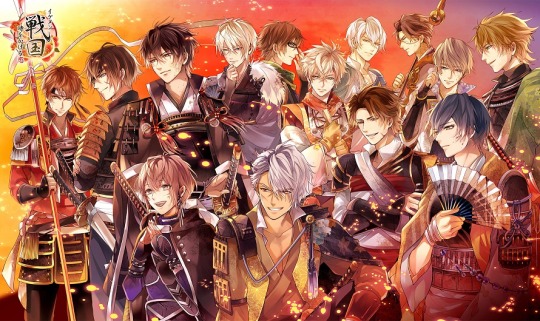
Ikemen Sengoku is hands down my favourite. I would recommend this to most Hakuouki players in search of some interesting historical otome.
not historically accurate (apart the obvious, the warlords presented did not all work or live together in 1582 as presented; the main AU premise is that certain key warlords didn’t die, and relative ages and relevant details have been adjusted to fit the overarching plot(s)), but captures a lot of historically accurate details
best protagonist (modern sensibilities, has a chosen profession she relies on, sense of humour, generally competent, spunky but not perfect
the modern-era physics grad student and history-buff-turned-ninja Sarutobi Sasuke is a wonderful person, character, and “narrator”
excellent sense of humour (game) - big selling point for me tbh, and the localization team has generally done a great job (translating humour is *hard*, and while the adaptation sometimes strays too far from the Japanese original, it’s generally very good)
all main routes are different (overall, the main story quality is very good and has plot to go along with the character/romance development)
character background and development is very good
variety of love interests, with non-love-interest characters still playing important and interesting roles [sadly, few-to-no developed female secondary characters; lots of bro/mances of different kinds]
main routes all have two different endings (moving toward three); the different endings span several chapters (not just an epilogue) and are reasonably distinct in most routes (but both are clearly happy endings)
dressing up your character turns out to be a lot of fun (apparently I have NOT gotten over playing with dolls, bears, or chibis, go figure)
special “events” feature all kinds of new stories, some more creative than others (imagine Hakuouki with frequent, official new content!)
Note: romance/sexiness level varies per route and character (Cybird provides some guidance on this in their route notes for most of their games); you generally have to pay to read more explicit stuff, but even then the level of implied/explicit varies - IkeSen is generally mid-range for Cybird for romantic/mature content in my opinion
Voice Acting: only a few voiced lines, but more are in the works - there is a PS Vita version of the full game with full voice acting; my attention was drawn by Toriumi Kosuke (Saito from Hakuouki) voicing Toyotomi Hideyoshi (but the voice is deliberately lighter than Saito’s sadly for me); there are a LOT of pro seiyuu in the more recent Cybird games (Hakuouki’s Kazama as Leonardo da Vinci in Ikemen Vampire is a treat for the ears, honestly)
Reviews for other Cybird:
I enjoy Midnight Cinderella for the sheer Princessy-ness of it all, and playing with dolls *ahem*. The main stories have both “personal development” and “political intrigue” style plots; however, this game is biased toward romance. There are a range of love interests, which is great - everyone can have their favourite(s). The top characters are “poster boy” (Knight Captain) Alyn Crawford (the guy you’d find on the box cover if there were one), (King) Byron Wagner, and (Duke) Louis Howard. Call them Classic Tsundere, Classic Kuudere, and Classic Appears-to-be-tsun-but-is-really-a-total-cinammon-roll Deredere.
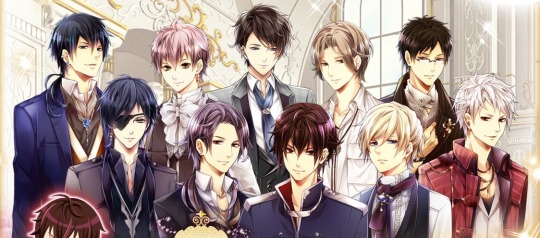
I enjoy the characters and world design of Ikemen Revolution; would definitely recommend it, but feel more could have been more done with the setting and characters. Alice is my second-favourite Cybird protagonist. The character interactions are very good and well-developed.
Ikemen Vampire is very popular, and has a lot going for it, but isn’t my personal cup of tea. That said, I’m still playing, and I do enjoy various aspects of it - the characters and character interactions, for instance. If you’re looking for a more modern, sexy, gothic kind of feel to your otome, this could be a good choice.
I wouldn’t spend money on the Shinsengumi game, Destined to Love, for two reasons: (1) Cybird appears to have dropped the localized version completely (you can play all the main stories for free, one chapter per day, and you can buy old event stories, but there are no events or updates; (2) most of the stories have an unfinished feel to them, at least for me.
That said, DTL isn’t bad if you’re in the mood to read some different stories about Hijikata and the guys (plus there are more love interests from the anti-bakufu side). Hijikata and Saito have a similar feel to them, Okita and Yamazaki have definite similarities as well; I enjoyed Sakamoto more in DTL than in Hakuouki,and Katsura is nice. Takasugi has a route if you’re okay with a rougher version of Hakuouki’s Okita - just be prepared for sarcasm and a very aggressive edginess.
Non-Cybird:
MLQC is a lot of fun as a deck-building game and has the most innovative story - character development aside, it’s a mix of modern China (the main plot is set in a fictional Chinese city) and increasingly sci-fi elements as you slowly learn more about what makes the protagonist and the four love interests different. There is a fair bit of grinding if you want to read more chapters and upgrade your cards, which are needed to pass challenge points in the story.
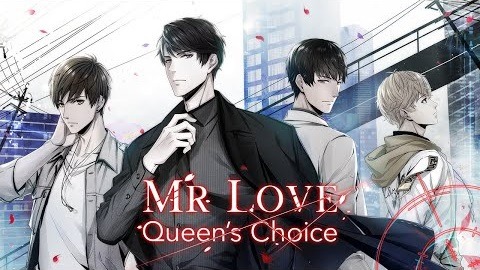
This game does not follow the usual “common route then pick a route” progression of most otome games. Also, you don’t have choices that affect the main route progression (there are choices that affect each love interest’s affection level, though). You fully control which cards you develop (since some resources are scarce unless you throw money at the game), and you’ll probably develop one or two guys’ cards over the others. Since each card provides you with a four-part story “date” (mostly implied romance, some more, some less), it’s up to you how you progress.
The art is gorgeous, the story is great, the translation is… not so good but better than many Chinese games… the English voice acting is quite good. You can also download the Japanese voice acting in a number of places.

This is not the kind of otome/game you play to get an Otomate (Hakuouki, Code Realize, Collar x Malice) kind of experience. But there are a lot of good qualities. One of which is that it’s the easiest of the games to play for free. Also, they have a “post whatever you want” policy. Which tells you just how popular the game is, since people throw money at it anyway!
~ Imp
PS This is already longer than intended, but there’s a lot more I could write. I’d be super happy if you (or anyone!) had follow-up questions about the mobile otome experience or specific games.
#otome games#mobile otome#asked and answered#otome reviews#and a lot of general comments on how it all works#long as usual XD#miss-perkey#thank you for asking!#cybird otome#ikesen#ikerev#mlqc#midcin#ikevam
36 notes
·
View notes
Text
The Maze Runner (series) - review
Buckle up, this is going to be a long one. My thoughts on the series as a whole is that it’s an alright one, and you’ll soon see why the praise isn’t higher there. I’ll go book by book with my thoughts on each, so you can know exactly the way my feelings progressed to this point.
Book 1: The Maze Runner - 5*
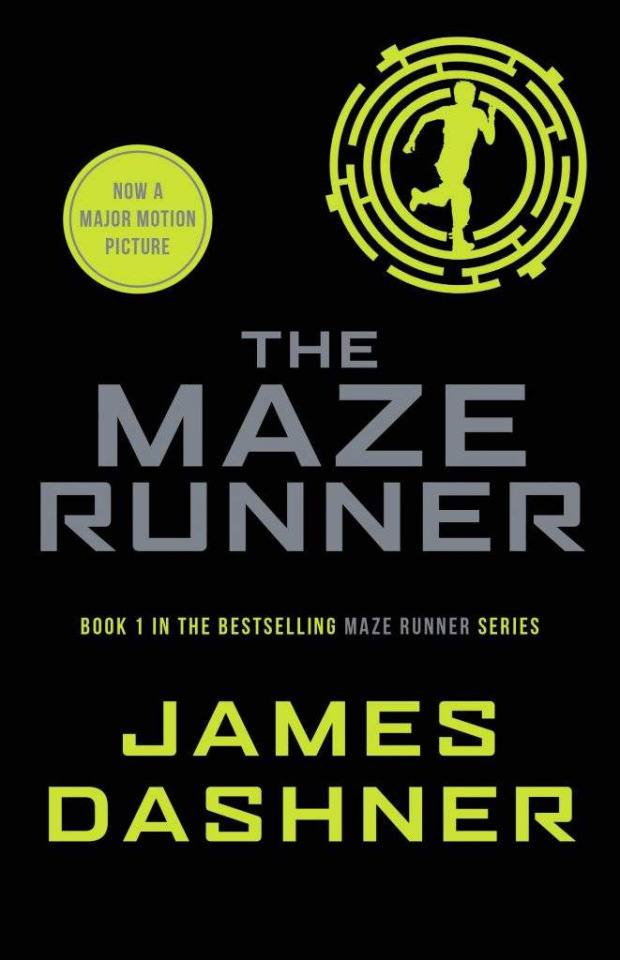
I gave this book a 5 star rating, but honestly it's been nearly 2 months since then and I'm still not sure on that rating. Ideally, 5 stars for me means I got so attached to the characters I cried or had some other emotion, but that didn't happen here. Instead, I got a fantastic plot with a ton of mystery and a lot of terror, all with amazing writing but uninteresting characters. I won't say they are flat characters, because they aren't, but I didn't really feel a connection with them. There is only so much you can relate to a character who has no history.
Thomas is obviously the main character and so we see everything from his perspective, and we do see his emotions, his personality, his struggle. He spends a good portion of the book confused, angry, sad, frustrated. He's not a flat, boring character by any means, but for some reason I just didn't feel that connection I usually do with main characters. Maybe it's a side effect of the third person limited narration, or maybe he just isn't a character I can relate to, but I wasn't really interested emotionally in his character. I didn't need to be really, because the plot more than made up for it.
When it comes to the plot, I found no faults. It was fast paced and had me asking questions the whole way through, and most of them even got answered. Most of the questions pertained to how the Maze worked; How was it so high up that the box rose for half an hour? What was really around The Cliff and how were they seeing stars below them? How did the walls move? Was it actually indoors or not and how would that even work anyway? I love when I’m constantly asking questions and coming up with theories while reading, and this book was one huge question mark. Just the memories plot alone had me on the edge of my seat, and I wanted to know more.
If you only read books for the characters and their personal arcs, this might be a bit weak on that for you. If you love a good mystery mixed in with a bit of horror and sci-fi elements, plus a dash of dystopia (which I’m sure will become a big dollop in the next book) then this is absolutely the best thing to read. It’s definitely a 5 star quality, just in my personal opinion not a 5 star emotion.
Book 2: The Scorch Trials - 3*
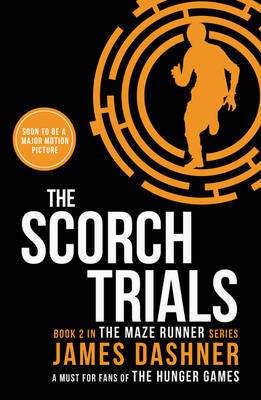
Honestly, this was not anywhere near as enjoyable as the first book. Technically speaking it was a well written book, but personally I didn’t find it great, simply okay - average. Enjoyable to an extent but irritating to a certain degree. I kept reading because I expected something to be answered but all I got was confused. After watching all the films and powering through the first book I genuinely expected so much more from this and I was let down.
It’s darker and more gory than the first book, with some shocking scenes that kept me going. I did appreciate all the dream flashbacks from Thomas that helped put together what exactly he had to do with the Maze. Outside of these dreams I just didn’t know what was going on half the time and I felt frustrated by it all. His backstory was legit the only reason I was interested at all. I didn’t really care where they were going or their journey, l just wanted to know about his missing memories.
I understand this one was to set up the world a bit more and go into character development, but this was the most mediocre of middle book syndrome books. I can honestly say here I preferred the film.
Book 3: The Death Cure - 4*

Oh boy with this one. I have a very immediate reaction with lots of spoilers here on my goodreads if anyone wants to see that, but I'll summarise with the good spoilery bits cut out.
Well, my brain hurts.
This book honestly started out kinda meh, with some interesting tidbits thrown in. Then it got less meh, but more disturbing. Whether all of it was really that bad or whether it was bad because of the real world parallels right now I do not know, but I got a little bit messed up by everything that happened in Denver. The worldbuilding became more relevant here, we learn more about the Flare, the way people are living alongside it and/or with it, and the way Cranks are really treated. We get to find out about The Purge too, which I'll leave as a lovely surprise for those of you who haven't yet read, but what happened and my loud opinions are through that goodreads link if you want entertainment.
And on that note, let's talk Teresa. Full disclosure, I went into this trilogy already loving the films, and I still stand by that love. The treatment of Teresa in those films, however, was abysmal, and to read her actual character arc, well, I was enraged. Her arc in these books is fantastic, and the way she grows and realises the consequences of her actions is actually realistic, especially after all the trauma of the trials. We barely even see her and yet we see most of her character arc in this book. Simply getting her memories back wouldn't make her forget all the horror and go back to Wicked, and the way it was all handled was super satisfying. It does all make me wonder if perhaps she knew about the Brain thing, though. I won't know until I read that prequel story so until then I'll just have to speculate [currently reading that, still don't know]. On a similar note the Chancellor Page storyline was bizarrely different, and I had a shock when we get to interact (?) with her in the capacity we did.
Chapter 56 can choke. I knew it was coming okay, yet it still made me feel like I was punched in the chest. Especially after the previous scenes where we see things happen with a certain character in a scary way.
I can't talk about the Brain thing. It's disturbing to think about and I will be repressing the memory of that whole section of the book as soon as I can. It also kicks off a series of horrifying imagery and tragic events that hurt my emotions. All I can really say is that it's a strong ending to a trilogy, and if you're here you probably got past the travesty that was The Scorch Trials so this book will be a breeze compared to that, just be wary of the medical horror and the horror in general, since it's pretty graphic.
You may notice I haven't discussed Thomas, and that is because I'm too messed up by the Brain thing. The medical horror plus his reaction to the knowledge of what was about to happen knocked me flat emotionally and I may never get past that in terms of these books. No one has ever mentioned the Brain thing in any fan space I've been in, and that's for a good reason. Just know Thomas grew on me slowly just in time to cause me great distress. That is all.
Book 4: The Kill Order - 4*
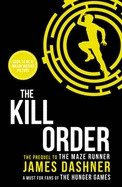
I kind of loved this book, but as a friend. It basically shows the story of the Flare virus' bad beginnings in the world, with flashbacks to the solar flares that caused all the initial devastation. It was one hell of a page turner. It read like it was just meant to be a film, if you know what I mean. It does stand alone if you don’t read the prologue.
I honestly wasn’t expecting to get quite so many tidbits of information about the actual Flares event itself; to be honest I was expecting this to be a typical zombie kind of story that starts after the beginning and ends before the end, but it actually starts at ground zero on day 1 of the Flare (outside of the control group that is). I thought it was horrifying and fascinating to see how quickly it mutates and the effects changes, and also how the characters react knowing that they’ve probably been exposed to it from the beginning. Seeing the inside of the mind of one the earliest Cranks as they become infected was amazingly interesting after seeing how Newt acted in the Death Cure when he got sick.
The flashbacks to the Solar Flares and its aftermath were just terrifying. The imagery was horrifying and the whole concept of sun flares and then massive floods of boiling hot water put me right on edge even though obviously they were alive at the start of the book. Something that massively surprised me as I read was that the Flare virus had only been around for 13 years before the start of The Maze Runner, and it only took the government 1 year after the solar flares to decide to kill off part of the population. No other dystopian I’ve read can top that level of evilness from governmental systems.
Aside from the horror aspect, I was also mightily confused and a bit amused-but-also-horrified at the cult. If you’ve read it you know. If you haven’t yet then you’ve got a storm coming let me tell you. Although we see in Death Cure that Cranks form mobs with a common purpose and of course they they lose their minds, I wasn’t at all expecting to see an actual cult just casually thrown in. It just adds to the madness of the story and actually fit right in among the other craziness of what went down.
My one question is: is DeeDee Teresa? (She was! It was implied in the next book.)
The reason I didn't rate this higher despite my enjoyment was that it just isn't a book I would reread. It's like an action film or horror film that you really enjoyed and appreciated but won't stick around for too long.
Book 5: The Fever Code: 3* on Goodreads, 2.5* in my heart

This one was a slog to get through. It goes over Thomas' life in Wicked, from the first few days to the day he goes into the maze. I didn't like it very much at all. My biggest problem was the torture of a 4 year old only a few pages in. It ruined the rest of the book for me. My second biggest problem is that we never learn Newt’s name. The betrayal of it all is astounding.
I’ve got to be honest, I was only pushing myself to read this because I wanted to know about the purge. It doesn’t happen until pretty late in the book and nearly everything before that is terribly boring. Everything after that happens pretty quickly.
I appreciated that we get added context to some things that happened in the main trilogy, however, some things that happen take away from the story in a bad way. Dr Paige is one example of this, where in the main trilogy she only appears in a positive context to save Thomas and the other immune, while in this she does some truly evil things behind the scenes unrelated to the context of the trials (or so she tells Thomas. We don’t know how much of that was truth and how much was intended as a Variable but either way it contradicts what we know of her in the Death Cure). The huge reveal at the ending regarding Teresa is also out of nowhere and seems contradictory to the main books. How much of her actions were planned and how much were real? Why would she lead the gladers to escape if she was as this book said she was? Was it a change of mind or was this particular aspect a retcon that wasn’t intended with the original books?
This one felt like an unnecessary addition to the series and I’m disappointed by how it turned out. I expected more and got less. If it hadn’t picked up in the last 150 pages this would’ve been a 2* simply for the disappointment that equalled that of The Scorch Trials. This may be a bit harsh but I do believe the books should have ended after The Kill Order, and the rest be left to the imagination.
To end on a semi-positive note: it turns out The Brain Thing was actually mentioned to them, but it's unclear if Teresa picked up on it, as we know Thomas didn't. It all came out at a very inopportune time while they were killing a crank who knew about it. The Brain Thing isn't positive at all, but I was very excited to learn if they had any inkling and that was sort of answered!
5 notes
·
View notes
Text
ppl have been asking me my opinions on space channel 5 vr... and i guess since i bought a vr headset off craigslist just so i could play it and speedrun it before work the day it came out... i should talk abt it now... i dont rly think i’ll be able to separate it into ‘good’ and ‘bad’ things i think i’m just going to do a rambly stream of consciousness bc i have a headache... but i DO have good things to say abt this game... so st.... sta stay t tune d
right off the bat, the thing i appreciate most abt this game- i like that space channel 5 vr doesnt have cash grab vibes. i Do genuinely believe that they Wanted to make this game For the people who are still obsessed with it, and that they ultimately did what they set out to do when they intended to scale certain aspects of the series up conceptually to match the way the fandom perceives it nowadays. but like i’ve said before... i’m not going to Disagree with the very common conclusion that it Needed to be longer, or at Least more intricate plot-wise. one of my fun and fresh excuses for sc5vr being as short as it is is because you arent really supposed to be playing vr games for too long anyways, its really disorienting and kinda painful, but even that doesn’t account for why so much of the game that we got is a rehash of old settings, concepts, songs, and characters. [i dont even have a problem with reusing old songs, i just think the ones they chose ended up being misleading]
for example i think it makes sense that the first report is a remake of the first games first report on the surface, it’s meant to take you back to the way the first game felt and give you an idea of what it means that the games classic scenery can be rendered in actual high quality detail now [same with the recurrence of events like encountering the space pirates in the asteroid belt/the last battle against a villain being singing to it about what it’s done wrong], but i really thought, like, report 1 was going to end up being a simulated scenario for the benefit of lou and kee’s training... which i dont think ended up being the case??? i think they really did write ‘ok here you are in the first game’s setting again, fighting the old enemies again, because... :^) ok have fun playing report 2!’
and then whats report 2... you fight another old boss from the first game... but theres Still no clear villain or motivation for anything thats happening... and there wont be until like... basically the end of the game...
like, glitter is a really cute character, but its kind of underwhelming that shes just a random citizen who was kidnapped by an entity that we NEVER LEARN ANYTHING ABOUT... like part 1 was extremely notable for being about corporate greed and corruption, part 2 honestly wasnt that political in comparison but at least made you do a think wrt purge’s motivation and his methods, and this game just has a plot device that feels like it’ll do smth but then ends up not doing anything beyond what we already learned about it from the information on its character bio before the game was out. if it turns out that cell x is actually relevant again in a future entry in the franchise and they do have a more developed concept for what cell x Is in mind, i’ll do an entire backflip, but for now its just chalked up to being the result of More Space Hijinks that dont need to be explained
ESPECIALLY WITH ALL OF THE ALLUSIONS TO CELL X BEING AN ENTITY THAT FEEDS OFF OF DANCE ENERGY... it had me thinking that there would have to be some New Method of fighting it off that didn’t just lend it more power in the process, but nah apparently just tacking on the disclaimer ‘*this dance energy is not for glitter’ is enough to turn it from smth it can consume for power into big attacks you can use to kill it... like honestly it sounds like im asking for a lot from a game that has Never made too much sense, but considering that in part 2 they could add details like ‘oh didnt you know purge can open pocket dimensions? ulala is capable of manifesting tangible dance energy and the only other person who can do that is purge???’, its not like they havent come up with weird new shit for dance energy to do within the plot before. they just didnt do it in this game fsr
like did anyone else think that cell x/glitter was going to be the result of tossing purge out into deep space and him encountering the sc5 universe’s equivalent of an eldritch alien creature, smth more bestial than morolians?? even if purge wasnt part of it, when you say ‘uh oh, this guy Eats this society’s only source of energy!!!’ i expect the stakes to get HIGH, and i want the ramifications of it to be kinda STARTLING, because blank wanted money and purge wanted to ritualistically end the world but something this near to an ecological disaster that would force an entire paradigm shift hasn’t occurred yet in the series?? its totally new!!! there’s a lot they could do with this but OH DONT WORRY ABOUT IT EVERYONE ulala knows how to make dance energy kill cell x instead of feed it she’s got this we’re good no need to investigate more into all that
i can’t explain why the game is like this. and i dont expect grounding to address it in any meaningful way either. i’m sure they’re Aware of these complaints by now- the game reviewing community has Not been kind to sc5vr specifically due to all of these shortcomings [i didnt even touch on the issues with motion sensing and how many of the games mechanics were removed in favor of smth presumably easier to program yet much less satisfying, like Secret Moves just being mini quicktime events and Turning Your Ratings Into Stars just being replaced with the standard Three Strikes You’re Out method of scoring], but the pr team still seems very enthusiastic abt the game and is still promising dlc and potentially even more games in the series after this one- heres hoping that they’ll at least take these grievances to heart and consider making the experience not only more accessible [aka it will... go back to being a rhythm game with controller input.... and not... an exclusive vr experience...], but also as immersive and detailed as the old games, with less reused plot beats. i can let some of it off the hook in this game simply because i’m aware that it began its life as a tech demo that was only supposed to be that initial first report from the first game But Happening All Around You!, but i Really dont think they could get away with doing this little to expand upon the groundwork set by the first two games again. not with the way people remember part 2 being such a vast upgrade from part 1... the bar had been set so high that this just felt like a huge backslide into something even sillier and harder to take seriously than part 1 before we had any idea what kind of staying power the franchise would have as a hallmark of sega’s quirky antics. like... this game is what i think space channel 5 looks like to people who don’t understand the appeal of the first two games. and that scares me
but i guess for the most part, aside from wishing they had done more to revitalize the setting and the lore of the sc5 universe itself, im kind of glad it didnt do a lot to change the existing storylines the characters have kinda forged for themselves- here i was stressing out that they would pull out some plot development that would utterly and drastically change the way we talked abt the series for the rest of time, but so little happened and so little was added to the bank of sc5 lore that we can kind of all just carry on as usual and keep having the same headcanons we always had.
BUT!!! there ARE a lot of cute little details here and there that make the experience feel wholesome and like i said not an utter cashgrab- like so many of the character profiles referencing previous games [all of the references to npcs in this game being relatives of the npcs of the last games made me lose it] and how often ulala changes her expressions up and looks right at you and talks to you. the new music they wrote for the game also all slaps and everyones redesigns [if they got a redesign... rip pudding] are stunning
one of the most important things they did in this game was give a nice sort of Update to every character.... for example explaining that ulala isn’t a rookie reporter any more like she was in the first 2 games, that she’s moved up to being in charge of training new channel 5 reporters, and that while pudding is still somewhat stuck on her rivalry with ulala her career isn’t stagnant either, she was just cast in a romcom series as the lead... which is really nice considering how in the past she was portrayed as somewhat of a loser with almost no remaining fans left from her idol years
and you knew i was going to bring up jaguar at some point HES ALL OVER THIS GAME AND IT LITERALLY MADE ME FEEL LIKE MY LIFE WAS WORTH POWERING THROUGH THESE LAST FEW YEARS AND ALSO LIKE IM A GENIUS FOR SPENDING SO LONG POSTING EVERY SINGLE DAY ‘NO REALLY, HE’S THE SECONDARY PROTAGONIST OF THE STORY, ITS ABOUT CHANNEL 5 AS A COMPANY AND THEIR IMPACT ON EVERYONE WHO HAS EVER ENCOUNTERED THEM AND THAT INCLUDES JAGUAR AS WELL AS ULALA HES INTEGRAL TO THE PLOT BC SHE WOULDNT BE ALIVE IF IT WEREN’T FOR HIM’ i feel like it’s really incredible how in this game he has genuinely nice energy and doesnt withhold praise from ulala just to be helpful in a mysterious way later and he like HAS FRIENDS now. like consider how he went from disgraced former ch5 employee who got mad every time he saw them, to kidnapped robot henchman kinda humbled by the fact that now the turns tabled and ulala had to rescue Him, and now 3 years later his bio is all about how he has a new tv show thats super popular and he has a new entourage of ladies who he considers his '’’’’’comrades’’’’’’’ within the station he founded??? AND AFTER 20 YEARS THEY WERE FINALLY ABLE TO GIVE HIS MODEL JUICY ASS CHEEKS??????????????? NO MORE PANCAKE BOOTY???? THE BOY HAD A GLOWUP AND NO I WONT STOP TALKING ABOUT IT

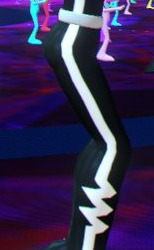
WHEN I SAY MEOW MATCH THE POSE MOTHERFUCKERS THIS BLONDE BASTARD GETS TO BE IN CHARGE OF THE HUNDRED STAGE BATTLE NOW TOO THIS IS THE YEAR OF THE SPACE PIRATES BAYBEE
#its almost 4 am. idk i will probably have more to say tomorrow. my head still hurts#the galaxy depends on my funky moves
9 notes
·
View notes
Text
Friends. I am so unable to have coherent thoughts about Arrow at this point. I wanted to do a little 7x19 review (not much to say, tbh fuck I lied), but then again I also wanted to do a 7x18 review, and a 7x17 review, and...also talk about Arrow ending and EBR leaving. Yeah, ‘cause I still haven’t managed to do those things.
I keep thinking I have to have all my thoughts in order and arranged before I can say anything valuable, but the problem is my thoughts won’t comply. They refuse to be orderly and arrangeable. (Also I’ve tried just typing whatever is in my brain, too, but all I have to show for it is about 10,000 words of semi-coherent babbling hanging out in my Drafts. Probably never to see the light of day.)
So anyway 7x19 (🤞 that I stay on track here - update: I fucking failed! 😱😱😱): it was okay I guess.
As we draw to the end of the season - of the show, really - a few things keep bothering me, and unfortunately they’re coloring any and all enjoyment I may be able to squeeze out of the episodes so I have to just get them off my chest:
1. I keep getting stuck on the terrible production value. I can’t help it! It’s gotten to the point where I cannot help but see the production as much as I see the story, and it’s so jarring. I see the sets, the stage, where I only used to see the setting. It’s the (lack of) camera angles, the lighting, and the very obvious reliance on sets, rather than location shoots.
And I can’t help but think: it didn’t used to be like this. Seasons 1-3 were so immersive, so atmospheric. Stylized? Yes, but in a way that was purposeful and enhanced the story.
The most recent seasons make production feel only like a means to an end.
I think the production budget got cut a little after season 3, but seasons 4 and 5 still felt epic and captivating enough. But season 6′s production values were abysmal. And I thought it would finally improve in season 7 with the new showrunner, but instead it has only gotten worse and I realize now that it must have everything to do with budget. (And maybe this is my bitterness talking, but I can’t help but suspect that part of it is that increasingly, more and more of each year’s budget is being used to fund the crossovers. 😠)
The EPs seem to have forgotten something critical about filmmaking - production is always going to be a crucial aspect of story-telling, whether it’s intentional or not. There’s no such thing as an “objective” camera angle or edit. Every non-decision has as much an impact on the story as a decision would have, and by forgetting that, they have vastly reduced the overall quality of the show.
Anyway, I feel like I have to make one thing clear, since after all, I WAS ON THE SET and I MET THE CREW - literally shook hands with and spoke to camera operators, lighting people, and all other sorts of production people: they work hard and take their jobs seriously and in no way am I trying to suggest that any of them are bad at their jobs. They were truly lovely and professional and I was so impressed by them. I truly think the lapse in production values is entirely due to decisions made at the very top about money. It just has a very unfortunate, very obvious impact on the quality of the show they’re making.
2. I can’t help but see and lament the effect of OVERPLOTTING and a lack of emotional foregrounding.
I comment all the time about how tight the story was in seasons 1-3:
Big Bads who had a personal connection to Oliver
seamless interweaving of the Flashbacks and the present
a clear, consistent, well-paced evolution of Oliver’s character that paralleled the action/plot
excellently-plotted storylines where all the characters were relevant to the plot - so that we had a reason to care, and focus on character actually forwarded the plot.
a good mixture of villains of the week that were both interesting unto themselves, and provided much-needed wins/breaks in the overarching plot, and allowed for plenty of character moments
generally, because of all of the above, a perfect sense of pacing and an excellent balance between plot and character, where plenty of time was given to dialogue and quiet character moments - which only served to enhance the plot
But then season 4 came along and things went south quickly, mainly due (in my opinion) to writing decisions that put plot over character, resulting in some seriously out-of-character stories that unfortunately had a huge impact on the show going forward. But even aside from Oliver’s uncharacteristic lying and Felicity’s unlikely decision to call the whole thing off, season 4 was already suffering from a clear lack of the things (above) that made seasons 1-3 so good.
It was the first time the BB had no real connection to Oliver’s past, which meant that suddenly the villain arc had to pull double-duty - drive the present-day plot and also somehow establish an emotional reason for us to care. Unfortunately, rather than pulling those two threads together into a tight, single focus, the writers created a sprawling story - a messy, confusing present-day arc and the absolute worst flashbacks of the entire show.
And it also saw the deliberate introduction of more comic-book elements to the show, with Damien Darhk’s (and Constantine’s) magic, which was a wrenching change in tone from the first three season’s grittiness. (I know a lot of the haters like to blame this shift in tone on Olicity - and even I will admit that the suddenly happy-go-lucky Oliver was a little too heavy-handed - but I fully believe the tonal shift has everything to do with the introduction of magic. And, of course, the horrible, clunky, meta-heavy crossover, which for the first time was used as a vehicle, rather than a chance for us to enjoy interactions between characters we loved.)
Then there was season 5. Lots of people love season 5, and I agree there were good elements, but for me it still suffers from a lack of those things that made seasons 1-3 so great:
most of all, with NTA there were suddenly too many characters - and they didn’t have a legitimate reason to be there. Their stories were arbitrary, inconsistently explored (or, more accurately, not explored), and had nothing to do with Oliver. And (maybe worst of all), their backstories/stories had nothing to do with the overarching plot of the season. So, again, the show’s focus was pulled in a million different directions, rather than the earlier brilliance of plot and character working together to drive the narrative.
the introduction of metas as major characters in Arrow (rather than only being used in the crossovers) continued the cartoonish atmosphere which, in my opinion, made the consequences of all actions feel slightly less real, less impactful. To me it felt like a betrayal of Arrow, at its core. Because Arrow was solidly gritty for the first 3 years - even the League of Assassins storylines of season 3 felt grounded and real. Even The Count, Cupid, the Clock King - comic book villains to the core - still felt gritty and real within the universe. But (for me at least) the casual reliance on metahuman abilities let the writers be sloppy and careless with their plots, their resolutions, and their consequences.
and I know most people love Prometheus, but I never loved him for two main reasons. First, while I appreciate the fact that they tied Prometheus’s origin to Oliver, the personal connection just felt forced to me. Prometheus, Talia, all of it felt untethered and hasty. I think they could have done a much better job grounding the story, planting the seeds earlier, but they didn’t. Second, Prometheus just won too much. The show had spent 5 years making us believe in Oliver’s abilities - as a fighter, an archer, and a strategist - and it was suddenly as if he were a bumbling idiot. The show made him seem incompetent in order to make Prometheus be always 10 steps ahead, and it was not only disheartening, it was unbelievable. Because not only did Oliver have 5 years more training than Prometheus did, he also had a team behind him.
Season 6 failed spectacularly in all ways, in my opinion. It was the ultimate example of overplotting, where the writers basically took everything that was so great about seasons 1-3 and did the opposite. Too many characters, uneven pacing, a sprawling, unfocused villain arc, and a lack of any given reason to care about any of it. And of course, everyone acting counter to their long-established characteristics.
I was really, really hoping that Beth and the new writers would use season 6 as a counterexample: what not to do in season 7. But (and again, I am not trying to place blame - I have no idea who is really in charge of these decisions, plus at this point there are already so many balls in the air that a lot of it is probably out of the writers’ hands anyway) as season 7 winds to a close, it’s clear to me that they’ve basically repeated a lot of the same plotting problems of season 6.
Which brings me to 7x19. (And all of 7b actually, if I’m honest.)
Because this was supposedly a JOHN DIGGLE-centric episode, but it was way too little, way too late. (Setting aside the absolute tragedy that it’s been 7 years and this is the first chance we’ve gotten to look in-depth into John’s backstory beyond Andy.) Like others have mentioned, the focus on John felt superficial at best. We have a character with 7 years of characterization to explore, but the episode hardly touched on John’s character, his emotions, at all. And the little we got felt superficial.
Instead, the episode was plot-heavy, convoluted, and tried to accomplish too many things. Things that, for the most part, had not been adequately emotionally foregrounded. By that I mean:
John’s story with his stepfather could have been awesome, except we’ve never fucking heard John even mention his parents before this episode. They planted and harvested those seeds all within a single episode.
Felicity’s struggle with her legacy...WOW. That was the first time we’ve ever heard her specifically say that she wanted her own legacy more than as Overwatch. Yeah, we have the “beacon of hope” stuff from 4x17, and some references here and there this season - and I don’t mean to be ungrateful - but I feel like there were ample opportunities to do a better job foregrounding Felicity’s struggle, yet they just haven’t.
Emiko and Dante. Yawn. Too little, too late - both in the season and in the series.
Emiko and Oliver. Same.
I have strong feelings about why it’s all going wrong, and for the most part I think it’s this: the writers aren’t trying to tell a complete, emotionally fulfilling story in season 7. Rather, season 7 seems to be divided into two discrete storylines:
7a, the prison arc, was pretty much its own thing. Sure, the writers attempted to establish a connection to 7b through the flash forwards, but it’s a very weak connection that relies on illusions and attempts to obscure the audience’s perception of events (mainly to do with the attempt to make us believe that Oliver’s prison stint caused a fundamental change in Felicity, making her become a villain in the future). But in reality, the 7a arc was pretty much self-contained - and, in hindsight, all the better for it.
7b, on the other hand, has lacked focus and direction, and as the season has worn on it’s become increasingly clear that rather than having purpose and emotional fulfillment of its own, it’s being used as a vehicle:
to drive the flash forward story, and/or
to drive next year’s crossover storyline, and/or
to drive season 8′s storyline.
(I’m using and/or there because I pretty much suspect all of those things are one in the same.)
Seasons 1-3 (and even 4 and 5, to some extent) built upon each other. The writers planted seeds in seasons 1 and 2 that didn’t pay off until much, much later, meaning that we were invested in that payoff. We were adequately prepared, through plot and character, for those stories. But rather than continue to reinvest and build on elements of the earlier seasons, the latter seasons - especially 6 and 7 - have gone off in completely unprecedented directions. And for season 7, this means they’re trying to do accomplish too much at the very end. Too much plot, too late in the game, with too little emotional foregrounding.
We have THREE EPISODES LEFT after this - only THREE EPISODES left with Felicity - and there are still so many unanswered questions. Not only for the season, but for the show. And somehow each episode still manages to feel stagnant, refusing to answer our pressing questions, or worse - introducing new ones.
And I guess that’s what’s really getting to me now. Because did I hate 7x19? No, not really. Aside from the general decline in quality discussed above, it was fine. I like the Team Arrow moments, I liked Olicity in the bunker, the team within the team. This is the sort of action and stories I wanted more of last season, and all this season too. It’s nice to finally have it again.
But it’s time for resolutions now, and we’re not getting them. It’s time they start answering our questions about the flash forwards, time they start resolving the Emiko storyline - or at least building up to that resolution. (Remember how tight 1x19 through 1x23 are? The threads unraveling, the ever-heightening intensity?? Nothing like the plodding, disconnected feel of these late-season 7 episodes.)
All of which makes me think they’re not really intending to resolve these questions this season at all. Rather than giving us a satisfying, complete story, they’re just rushing to the next thing - the next crossover, the next season.
And it just bothers me, because this is the end for Felicity. We deserve character moments, goddammit.
The showrunners seem to have forgotten that it was always character that made this show great. And it just makes me sad that it seems they won’t remember it in time to give us the proper ending that Felicity (and Oliver, and John) deserve.
#arrow meta#my meta#arrow 7x19#arrow 7x19 meta#holy shit what have i done#top posts#selected favorite posts#on television#on production#on tv production#on television production
59 notes
·
View notes
Note
I’ve always wanted to play the fire emblem games, but I never knew which to start with or if it even matters. What would you recommend?
Hmm, well . . . I’m far from a series expert given that I’ve only played three games out of the series (with Three Houses being my third), and the fact that I don’t even know exactly how many games are in the series to begin with. But with that said, I would say that---at least when it comes to the three games I have played---I don’t think it matters very much which game you start with, so long as you’re not starting with one that’s a direct sequel to another.
I mean, to begin with, to my knowledge there are still many Fire Emblem games that were never localized outside of Japan. I’m not sure how many of those there are, just as I don’t know how many games are in the series itself, but for instance, I know that Marth’s primary game (games?) at the very least was (were?) never localized, and the same with Roy’s (which I think is different from Marth’s). This is why they only had Japanese voices in Smash Bros for so long. Setting aside the ones that weren’t localized, the ones that were localized a long time ago tend to be extremely hard to get a hold of nowadays, and very expensive if you do. The two that come to mind most readily are Path of Radiance and Radiant Dawn, one of which is a direct sequel of the other (and I’m not sure the order on that one), but both of which are very expensive if you try to buy them off eBay (which is your best bet since they’re out of print now). If you don’t want to spend that cash you can pirate them, but that involves homebrewing your Wii, which is another challenge in and of itself. Until Nintendo wisens up and puts Gamecube and Wii games on the Switch Virtual Console (and then adds those games), they’re not exactly readily accessible to players who want to try them out today.
So I don’t think you’re at fault for not experiencing games that were never localized to a language you understand (unless you’re fluent in Japanese, in which case by all means go play the older ones, and also I’m envious), nor are you at fault for not paying hundreds of dollars for a single game, or trying to homebrew a Wii so you can play a pirated version. Furthermore, at least when it comes to the three Fire Emblem games I’ve played (Awakening, Fates, and Three Houses), you don’t have to have played the older ones, because outside of references to older ones made here or there (which is mostly relegated to Awakening for reasons I’ll get to in a second anyway), the older ones aren’t relevant---and even then, you don’t have to understand the references in order to understand what’s going on, and any you do need to know (e.g. Tiki’s relationship with Marth in Awakening) are explained.
With that said, if you were looking to get into Fire Emblem fresh right here and now . . . well, as I said, I’ve only played Awakening, Fates, and Three Houses. I can only talk about these three games, and I’m sure much more passionate and experienced Fire Emblem fans could point you in the direction of others (though I’d ask them to please do so on their own posts because I don’t want Fire Emblem discourse in my notes). But in my opinion, I would have you start off with the game I started with, which is Awakening.
Fire Emblem: Awakening was created both as a swan song for the series, as well as a way to try to save it. Basically, from what I’ve heard, Nintendo was ready to cancel Fire Emblem outright and never make another game for it because it wasn’t making them the kind of money they wanted. (That it wasn’t really localized / marketed well in the west is something i’m sure didn’t help, but that’s another issue altogether.) Intelligent Systems, the developers who make it, were given one last shot to make a game that would create the kind of profit needed to save the series, and so they created Awakening, a game in which the story largely surrounds primary characters trying to prevent a dark, hellish future riddled with death and despair (which I imagine is how the IntSys devs felt about their series being canceled, haha).
Long story short, their plan worked.
Long story long, the reason why their plan worked is because Awakening is accessible to newcomers in the series, while still having modes of gameplay similar to older Fire Emblem games (a.k.a. more punishing) for veterans of the series. (Actual veterans have plenty of discourse to say about this, but again, I don’t want discourse on this post, so please don’t.) Namely, Awakening introduced Casual Mode, in which if you lose units in battle, they only temporarily retreat from the battlefield instead of being killed off forever as in older Fire Emblem games. It also has a difficulty setting, so you can play on easier difficulty levels if you’re new to the series. Further, while I’m pretty sure that even older Fire Emblem games had support systems between characters that unlocked conversations and such, since a large part of Awakening focuses around family, the supports in this game involve actually getting to marry characters to each other, and so for those of us who like to participate in fandom, the aspect of getting to make our ships* canon was appealing as well.
(*Sadly, this only applied to het ships. Awakening does not have any same-sex options whatsoever. IntSys is . . . only very slowly getting better about this.)
Anyway, on top of all that, Awakening has a really fantastic plot, wonderful characters, and very fun gameplay. The animated cutscenes are beautiful, the voice acting is top-notch, and the music is gorgeous as well. It’s definitely not overwhelming for a newcomer (in fact, the entire point was that it wasn’t supposed to be since IntSys wanted to save their series!), and since it’s a 3DS game, it shouldn’t be very hard to get a hold of. So if you wanted to start anew with Fire Emblem, I’d recommend starting with Awakening, since that’s what IntSys intended anyway. :)
After Awakening they released Fates, which is a garbage fire better off avoided. Fates was released in three simultaneous installments, all full priced (with maaaybe a slight discount on the other two if you bought one? I think??): Birthright, Conquest, and Revelations. In order to get the full story you have to at least have either Birthright or Conquest, and then buy Revelations on top of it. You cannot get the full story without Revelations, and you cannot get Revelations without either Birthright or Conquest. So it’s basically one game for the price of three, and much worse than Pokémon since at least with Pokémon games you can get the whole plot in one game if you want, and trade for the ‘mon you’re missing. (Or at least you used to be able to. RIP National Dex.) With Fates you can’t do that. On top of that the main character is the worst, they made the shipping aspect creepy (at one point you’re supposed to blow on your 3DS so that it can seem like you’re blowing on your spouse’s face . . .), and the plot is just mind-bendingly awful. The only redeeming quality Fates has is this song, and honestly, it pains me that such a beautiful song is attached to such a terrible game. But seriously, just do not waste your time on Fates. It is not worth it.
There were a couple releases after Fates that I didn’t play, most notably Echoes, which was a remake of an older game in the series (though I’m not sure which one). However, the next main main release in the series was the one that just came out, Three Houses, which fixed EVERYTHING Fates did wrong and, in my opinion, is quite possibly even better than Awakening (though I still love Awakening to pieces and always will, don’t get it twisted). Most notably, while there are now FOUR different story routes, they’re all contained in the same game, so you only have to purchase one game to get the full story experience. Also, while there are even more ways to interact with characters now (e.g. having tea with them, eating meals with them), there are no creepy “blow gently on your system” moments, or “stroke the stylus to pet their faces” moments. The romance in the game (which only happens if you want it to) only occurs at the very end as well, at that, so it’s a slow burn romance no matter what. And lastly, the protagonist this time around is truly a silent protagonist, so you don’t have to deal with having a protagonist who, in the words of one liveblogger:
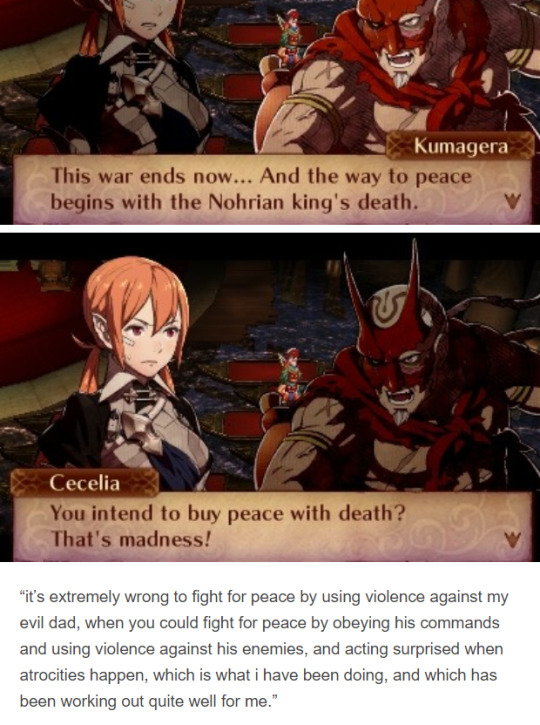
Granted, the Fates protagonist, Corrin (or as I like to call them, Corn), only works for their evil dad in Conquest, but believe me when I say that they are no better in the other routes. Corn is basically the Bella Swan of Fire Emblem, in every conceivable way. They are the worst. I hated them throughout both my Birthright and Revelations playthrough. We are blessed for not having to put up with a protagonist like this one in Three Houses, trust me. (Especially since Corn was such a downgrade from Robin in Awakening . . . and then one paralogue has the sheer audacity to compare Corn to Robin, like . . . how dare they . . .)
So anyway, this is an extremely long post and I’m sorry for that, but ultimately the TL;DR is:
It doesn’t matter too much which one you start with, since most of them are not sequels of each other.
I recommend starting with Awakening if you’re a new player, and so does Intelligent Systems, the developers.
Fates is a garbage fire waste of money and you are best off skipping it.
I have no opinion on Echoes, but I’ve heard it’s good.
If you have a Switch, definitely pick up Three Houses when you get a chance, since I’ve already put about 60 hours into it and I’ve only had it for eleven days.
And once again, other Fire Emblem fans, please do not start discourse on this post, I do not want to engage in the discourse, thank you.
12 notes
·
View notes
Text
Thumbnail Blaster Review and Bonus
Welcome to my Thumbnail Blaster Review and Demo
YouTube first became popular because an online platform for musicians to generate the name for themselves and obtaining more views was, and still will be, the ultimate goal intended for online video media content creators. In older days, people would use misleading title, tags, and thumbnails to a great extent to get more views and now nights Google and yahoo has won typically the war on spam by adding brand-new voice and image reputation technology to find an idea involving what exactly a video is approximately when compared with what the content material creator says in the title, tags, and even outline. This helps to give individuals with a much greater customer experience when looking a little something up on YouTube.
Online video media content creators are today up against having to in fact make quality movies that people will take pleasure in and to get more views, it should be seen by enough visitors to find the appropriate customer who will upload this on his internet site, or at least share the idea on Facebook. Rightfully therefore, Google's top main concern can be user experience over this content provider's view matter, however some authorities say the new changes in order to often the algorithm will trigger old video tutorials, that persons have already seen, get more attention than new versions and could actually produce it complicated for the user to find fresh new content in search outcomes to get popular search terms.
So, how could a video content creator in 2011 fights impotence the latest changes to be able to often the YouTube Algorithm? Produce Movies Like Never Before
Create a Following
Comment Your own personal Way for the Top
Off of Site Seo
Know This Difference Involving Junk mail And even Optimization
Create Video tutorials Much like Never Prior to
With YouTube's 92 Billion web site ideas a month together with soaring, a video clip has to be one of a kind for it to have popularity. Planning a movie and server scripting are now a must along having display quality. By comparing the videos with millions connected with views into the lesser regarding the tribes, you will observe the fact that high definition and exceptional lighting are two popular traits shared by this best viewed videos. This specific doesn't lead to you have got to get an pricey HD camera to get more views. Youtube . com offers a set of formatting tags, again to aid provide a a great deal better customer experience.
yt: crop=16: in search of
yt: stretch=16: 9
yt: quality=high
Use these types of labels to eliminate window boxing and poor video quality if you do not have access to HIGH-DEFINITION equipment. Pay attention to be able to your video's thumbnail choices careful not to be flagged for spam. "OMG" deals with are well-known thumbnail selections just so long as it can be what will be within the video. The. 25. four plus. 75 points in your online video media used in order to be what determined your own thumbnail selections when adding. With so much mistreatment, Google came up having the bright strategy for you to use the three best movies from your online video and semi-randomly picking a point through the three period of time points. Audio and picture root report names are also added into the picture to better give right thumbnail selections. Spammers can no longer just add a short graphic flash at the particular halfway level of their very own videos to get a great deal more opinions.
Build a Pursuing
As with Twitter, Forums, and MySpace, Facebook is normally also a social networking system. Being mixed up in community is definitely a must for fresh plus old video content material creators looking to come to be popular on YouTube. Build your channel around a exclusive market that has a new mid-sized level of competitors. Visit similar channels and even comment on their video clips together with sincere compliments or maybe questions. Treat your subscriber's movies the same approach so you are not really to be a dormant range in their ongoing give. The old SUB4SUB approach is still being used and has grown straight into its own community or perhaps niche. If your visitors will be teenagers, go regarding it! Be careful definitely not to be called out to be a spammer because this idea of, "You subscribe to me and I actually may subscribe to you" is often frowned upon by people of a professional background. YouTube picks upward on heavily repeated responses and even auto-marks them as junk mail so just apply a SUB4SUB profile picture and be participating in the SUB4SUB channels inside Vimeo community. Set aside some sort of day to work on building some sort of following about other social networking sites such as Facebook, Twitter, in addition to Facebook or myspace. This stretches your own personal right away to those who have no a good channel on Dailymotion which in turn surprisingly enough tends to make up for a lot of the home page's 92 billion readers each month.
Comment Your Way For the Top
Uploading a good video twice a week and commenting on the readers video clips and programmes often the working day before is a superb tip of thumb. Being consistent from doing so is definitely the work section of the whole entire issue. However, by doing this you brand yourself using your readers and build a awareness among them which starts the particular snowball effect associated with even more landscapes and even subscribers when they think and share your movies. This is the reason you want for you to stay within your specific niche market. When leaving comments, become sincere about what an individual sort. Never just point out 2 words and abandon. This particular totally defeats the particular purpose which is not necessarily heading to make people need to know who also left said brief review. Leave comments people need on their videos and share this comment on Facebook and Facebook to help make it show up as a "linked comment" on top of often the brief review feed. Each moment a good fans from Facebook or myspace or Twits clicks in this, the comment is certainly moved back in the top of the comment nourish. Be creative in your current comments and it can get thumbed upwards also gaining more and even more interest towards the author of mentioned comment. Often the ultimate goal here is to compliment the online video user's work which companies your own personal username and station so that when your videos show up in their subscription give food to, it will probably be hard to resist.
Off Web-site Optimization
The following is more "work" of which has to be done in order to move your videos to typically the top of search success. When people are searching for a person, it is best to be able to be easy to find. Just making use of a lot of tag words individuals are searching for just isn't going to trim this cake. Google wants to find out back links on well-liked sites leading to your video to compliment your states of everything you have since your title. When a well-liked site has a connect to your video using the particular terms in your subject, it gives PUBLIC RELATIONS points for that phrase following a certain amount of time. However, in case you go all-around posting unrelated hyperlinks, chances are the idea will end up being taken out and wouldn't count like a new back web page link anyway with the time aspect threshold. Upload your online video to other websites relevant to your niche along with participate in forum talks and post your online video like some sort of hyperlink any time it is relevant to the particular discussion. You have in order to keeping it related and that has to add value to the debate. If your links get taken off, the idea will have a change effect on your search results positioning so always be sure and respect the terms and conditions connected with forums that allow back links to videos and internet sites.
Know The Variation Between Spam And Search engine optimization
The fine line involving spam and optimization is crucial to breaking through typically the mass amounts of video lessons on YouTube if folks interested in your product will likely even know this is present. In case you are Fred, and your personal route (Lucas) says your age is 33, it is highly not likely you will obtain called out for lying about your age when you created your. If you are like many various other Facebook celebrities and your current information abounds with advertising your own personal social networks in addition to T-shirt sales instead of conveying the video, you may not get named out there either. However, chances are you are usually certainly not a Dailymotion celeb and if you adhere to suit, it is just a new matter of time before you are suspended via the site.
When selecting a title for your video, you should be creative and employ words and phrases that are intending to get results by search engines at the similar time. Decide on a search expression you wish to be found simply by (that best details the video) and use the idea in your title. Yahoo and google like wide variety so give a few support words to your phrase.
For example: Goal phrase: Remote Control Yard Mower
A good title will be: Remote Control Grass Mower vs. Steep Hillsides
Write a brief information using the target phrase only once towards top yet not really as the first sentence. Be organic and discuss to your viewers. Typically the tags for the online video media should be specific to your own personal target saying with plus without quotations. To illustrate: "remote control yard mower" out of the way control grass mower.
Following a thirty days of positive viewers allergic reactions, you will notice your online video media climbing often the charts. With thumbnail blaster review to competitive key phrases, your movie has for you to generate lots of beneficial viewer reaction before it is going to show up on leading of listings and at some point on Google as some sort of online video result.
Patients, difficult work, and consistency can be a must. You should publish videos on a regular basis most with a little bit different targeted phrases related to your niche market. It is a lot regarding work. Nevertheless , when a person get your first video clip up to a thousand views, you will be hooked about YouTube, wearing Dailymotion Tshirts, and even making courses to help others.
3 notes
·
View notes
Text
ICT Reflective journaling -
Disclaimer: This post is going to be very general.
Just like many other first year students, I did not really know what to expect with the transition from high school to university. Personally, I didn’t find it too intense, but I have so far learnt that in the Bachelor of Creative Technologies degree, that the thinking process is expected to be innovative and creative especially with projects and assignments. I find it interesting that a University degree is dedicated to creatively expanding ideas because I have always felt this is how I think and live my life.
The first assessment (Cards for play) was straightforward after deciding on continuing with Nathaniel's idea, we had to consider the words on the cards, measurements but Josiah and I focused more on the design elements of the project. Although, we originally had different ideas, our ideas were similar enough to choose one – it was not easy but not hard, we worked well together. However, an interesting experience I’ve had so far in Creative technologies was forming a group for the Dataset object project. Originally, everybody in the class had their own ideas for their datasets and after presenting, we put our ideas into narrower categories to make it easier to form groups. My initial idea was technology-internet based so I was expecting to see a lot more people in this category but there were not many. We all had our individual datasets but in the ‘technology’ group, we had a few sub-categories, which included; technology products, internet, gaming/ gaming marketing and social broadband networks (2 degrees, spark etc.). We didn’t find common ground in terms of an idea because we hadn’t really chosen the groups just yet. It was the first time since starting University that I began to really feel confused about an idea I had - If I really wanted to continue with this dataset or just “kill the baby” and completely change my idea. Seeing everybody else in the studio forming groups and switching back and forth, began to make me nervous because I was, at the time, unsure if my idea was good enough to be considered as it was not an interesting one and other people had similar datasets. After about an hour or so, of regrouping and listening to other people were saying about their potential ideas, I realised I wasn’t the only person. After most of the class seemed to be content with their project groups at the time, I was still unsure of what I would end up doing. I found myself in the middle of a group of 10 other students who were unsure of what group they wanted to join. I’ve posted about this previously on my Tumblr blog. The strange thing was that even though we had about three or four main data topics, some of us were still thinking which group or even idea to choose. I was starting to doubt that my idea was significant, so I then started to just listen to people and hopefully find a group that day.
Finally, at the very end of the day, I found myself in a group, with four other people (Josiah came the next day) and listened to each other's ideas. I thought it was interesting how I came across so many people in that hour time period, whether their idea correlated with mine or not – and I listened to what they were interested in, their datasets, what concerns them (e.g. some people who wanted to do something surrounding sustainability) and how they think they could portray their ideas. When I finally found my group, each of us had datasets and objects that completely inverse each other's. For example; one guy in our group (Elil) had an idea about doing his dataset around what I think was broadband networks/ cell phones/ data plans - which is similar to the field I had originally planned to work around. Aside from us, the others in the group had very different ideas – one group member wanted to stick his idea surrounding bees and honey (David) and we ended up sticking with that as it is relevant to our society and New Zealand. Josiah’s idea was surrounding deforestation and trees, and I don’t recall what Ethan’s idea was. I noticed that we each wanted to proceed with our own datasets but at first, we could not come to a conclusion as to what we would do our project on. Using the sticky notes brainstorming method that we previously done in class, we decided that it would be fair to have each person write up random ideas, events, objects, subjects and issues that interest us – so that we could categorize them into narrower topics. Even though we all had ideas that completely opposed each other, we came to an agreement to use the honey and bee's idea. We discussed various ideas that could use for the dataset project and we found the larger three groups were technology, food and green energy. These were some topics that we could all agree on. After contemplating the quality of my initial idea, I began to realise that just because my idea was relevant to my every day; Internet usage by New Zealand teenagers as of 2018), it does not mean it would not necessarily mean it’s a “good” idea. Before we finalised our decision, I thought that if we would do something without a technology aspect, that something around transportation would be interesting- I find motorcycles very interesting and thought we could try something around that. I felt very indecisive at that moment, while also considering the other group members opinions on it, too. Just like a quote from Shakespeare my teacher once explained to our class in high school; “The best safety lies in fear”. I interpreted it in a different way, which could mean, for me, that taking risks can be beneficial - we shouldn't always rely on our initial ideas as the result could turn out as unexpected. Me, being a very ‘shy’ and kept to myself type of person, I don’t like to think much about taking risks or exploring outside of my comfort zone but so being in the BCT has taught me otherwise...well that I have no choice but to come out of my comfort zone which has slowly worked.
In comparison from the first assignment I did in BCT, to the second, which we are currently completing, is that it was much more difficult to decide on a final dataset object concept – but in the end, we did. With ‘Cards for play’, we were able to define our concept and decide on its elements faster because we could agree that the concept that is intended to improve children's literal structure was a significant objective; especially because Nathaniel's father is a Primary school teacher and he sent them to Dunedin for testing. Whereas, the data project was more complex in terms of finding a group and finalising a concrete idea.
Bees/ NZ honey exportation:
We have gone with the bee/ honey exportation concept. For me, it was a relief considering the process leading up to it. But it did not end there. We each came up with various object ideas that could reflect the dataset of NZ bees/ honey exportation from the last five years - we thought of basic, simplistic and complex ideas. We then decided, at the time, to choose Josiah’s idea of a honey dipper, displaying the data by the width of each ring. We had to change the idea many times and “kill the baby” as Yvonne suggested it would be too complex to create in the time frame we have. So, we eventually chose to use melting candles as a final object. It’s simple, practical and gets the message across. This was something we could all agree on.We will be presenting to the class.
References:
- “The best safety lies in fear” - William Shakespeare, [The Hamlet], 1600s.
2 notes
·
View notes
Text
Strategies On How To Create Good Quality Web Design
You may know how websites work, but you don't know what it takes to design one. It takes some skill to add design features using HTML code. Becoming educated about web page design is important. Keep reading to find out what you need to know.
Web designers gave frames the boot in the 90's. While frames were helpful in the field of web page design back then, they were also problematic. Frame designs are harder for the audience to bookmark and scroll through. There are much easier ways to provide your users a flow through your website.
Research your keywords. While your main focus should always be on providing your customer with relevant and current information, you first need to work on gaining a customer base. Knowing what keywords will help to increase traffic is part of web design success.
If you have some ideas for more than one website, you should reserve a name for your domain, now. Claiming it now ensures that you have the exact domain name you want down the road. There are many people who have similar ideas. Great minds often think alike.
You really should have a dedicated space set aside, where you can design websites and manage your own site. This will help you to avoid distractions, become more efficient and focus on your work. Make your office supplies and tools easily accessible, and keep an optimized work space website maken Tilburg for your needs.
Many people know there is a software called Photoshop and that they need to master it if they want to make websites that look awesome. However, many people do not know about Dreamweaver and what it can provide web designers. You need to research this particular program, and discover how it can provide you assistance in your web design goals.
You must be open to research as you focus on site design. Research your niche and target audience. Think about the different aspects of site design when reaching out to your audience. If you can do that, your site will find success.
Try not to steer consumers on your website Webdesign Tilburg into different places other than what they are presently interested in. This also webbouwer Tilburg means avoiding surveys or pushy offers that cause viewers to break their focus and lose interest. While you may make a little bit of money off of these annoying interruptions in the short run, you are more likely to lose a viewer permanently.
Test the functionality of your website. It is important to do this for each step. Every time you add a new feature, make sure someone stops by and judges it impartially. To you, a slow-loading video might not be a big deal, but a separate opinion might say otherwise. Get opinions from the outside to keep the proper perspective.
Use time management skills. There are many small, tedious tasks that are easily left for another day if you are not diligent. They pile up quickly into a big problem. Take care of each small task as it comes up.
So you just launched your website and you think the designing process is done, right? Think again. Be ready to stay active with your site. Updating doesn't need to be daily, but you must find a regular schedule and follow through consistently. If you present current events or host videos, this is definitely a must. Maintaining a website is different from updating your blog. You still have to put in some effort, though!
Having read the tips from this article, you can understand that website design is not terribly complicated. Good information can help you learn this specialized skill. Take the information from this article to help you design beautiful websites.
1 note
·
View note